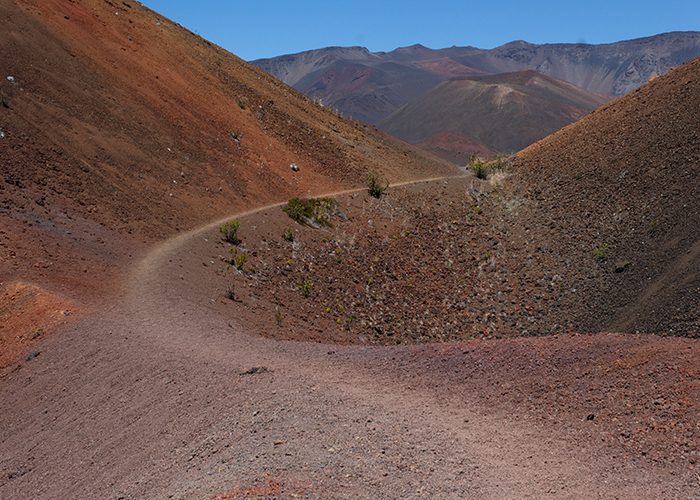 Previous Day |
Haiku → Haleakalā National Park → Lāhainā → Haiku 133.2 mi (214.4 km) |
 Next Day |
E hele kākou, e nā kānaka a pau!
It’s the Fourth of July in the youngest United State, and I sprung out of bed before sun-up to make the most of it! I was so excited, I rushed out the door and left my kukui necklace in the AirBNB, but no matter. I was going to spend this holiday hiking the enormous, dormant crater of Maui’s Haleakalā volcano, the namesake of Haleakalā National Park!
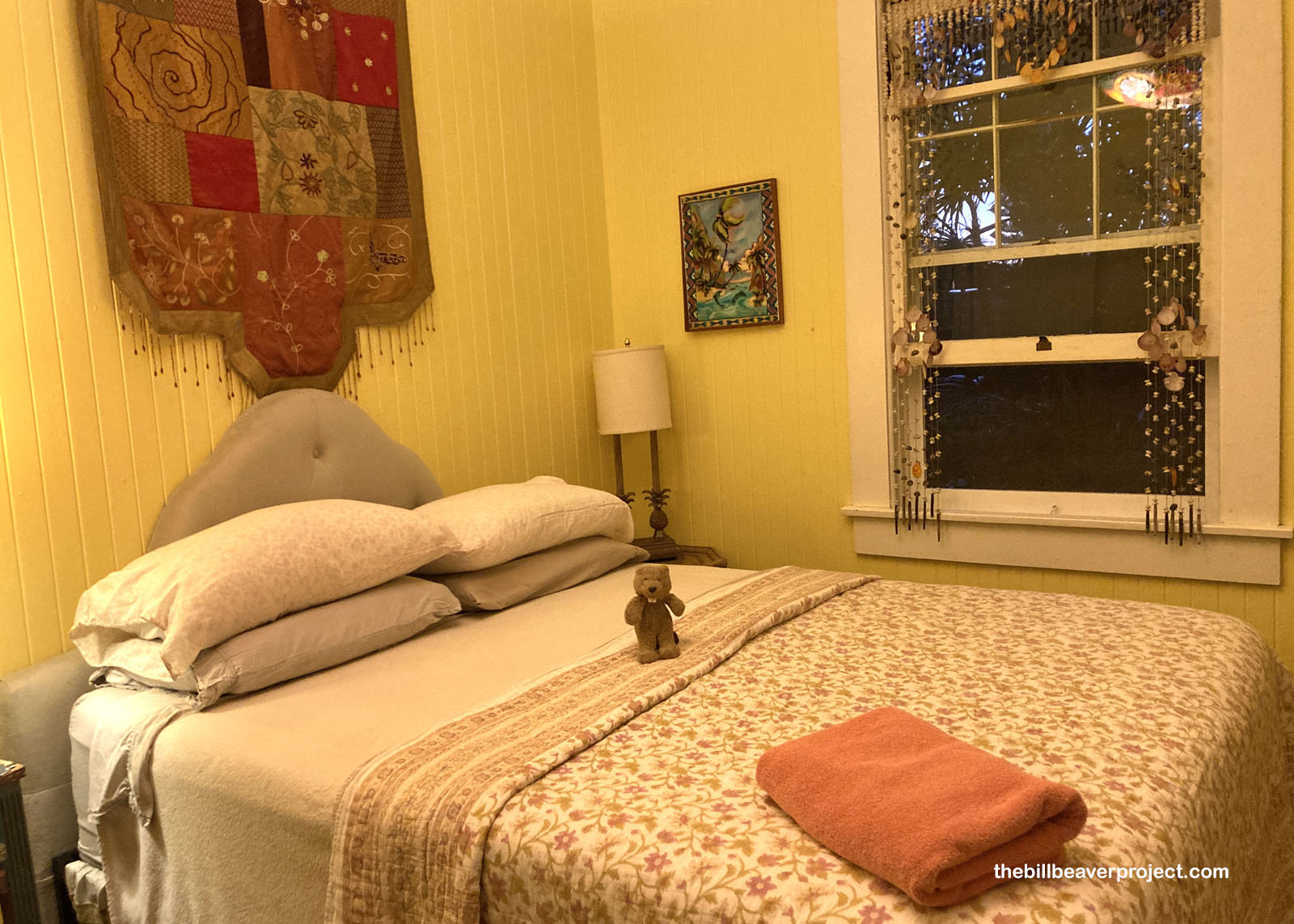 |
The park’s sign gave a hint as to why it’s called Hale (“house”) a (“of”) ka (“the”) lā (“sun”). Myths from New Zealand to Hawaiʻi tell the story of how the demigod Māui lassoed the sun and forced him to cross the sky more slowly. Here on the island that shares his name, tradition holds that the sun liked to stop in the crater of this volcano, where Māui’s blind grandmother would feed him bananas by a wiliwili tree! Māui convinced his grandma to help him capture the sun, and after a sound beating, the sun agreed to pace out the days more reasonably!
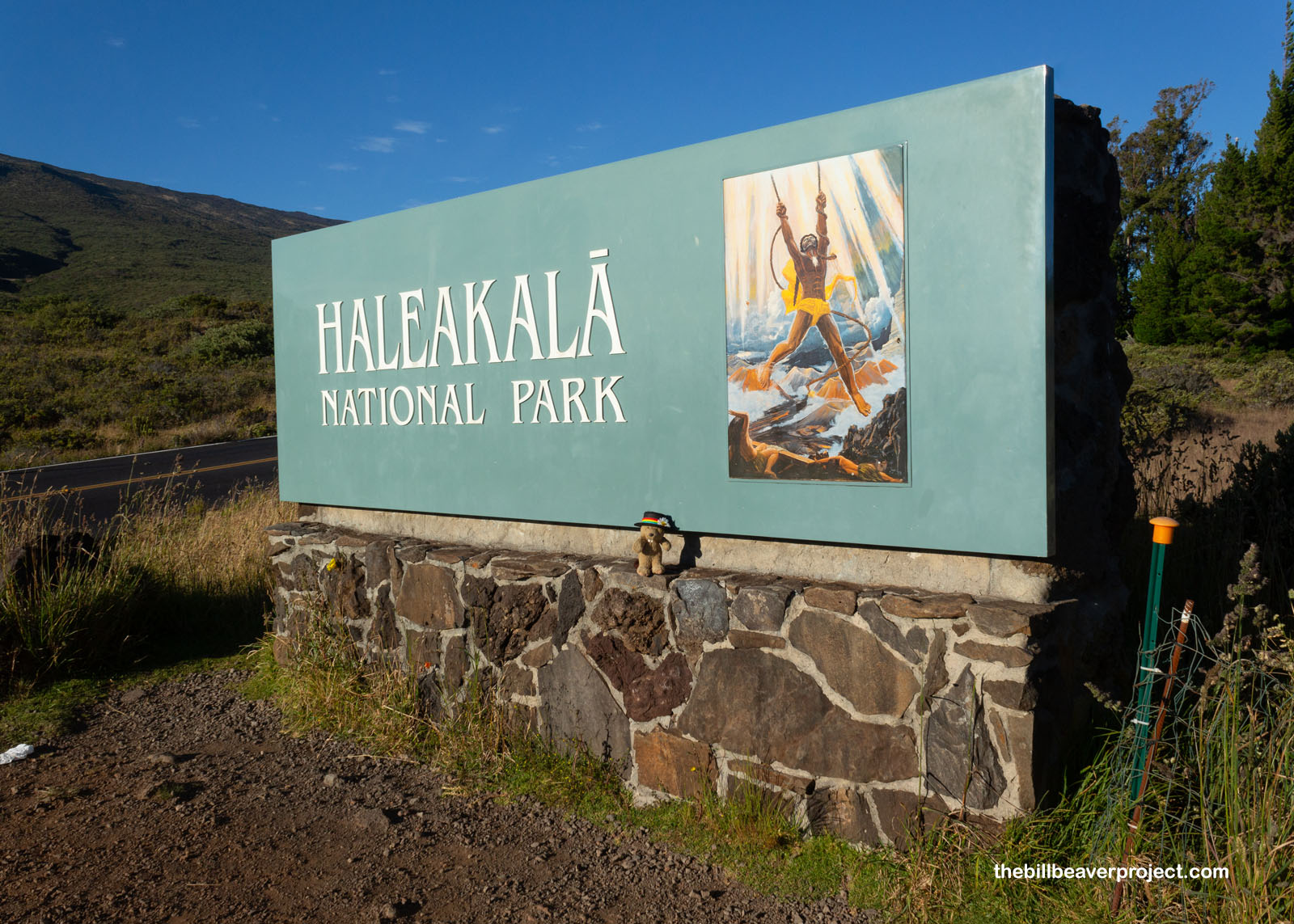 |
Lots of folks come to Haleakalā to see the sun rise, and I thought I’d do the same, only it turns out the park requires special reservations to enter between 3:00 and 7:00 AM! In short, I wasn’t going to see Ka Lā rise this morning, but the timing was still perfect. As I arrived, tour buses by the—well, busload—were heading out of the park, clearing a path to begin my trek on Halemauʻu (“House of Grass”) Trail.
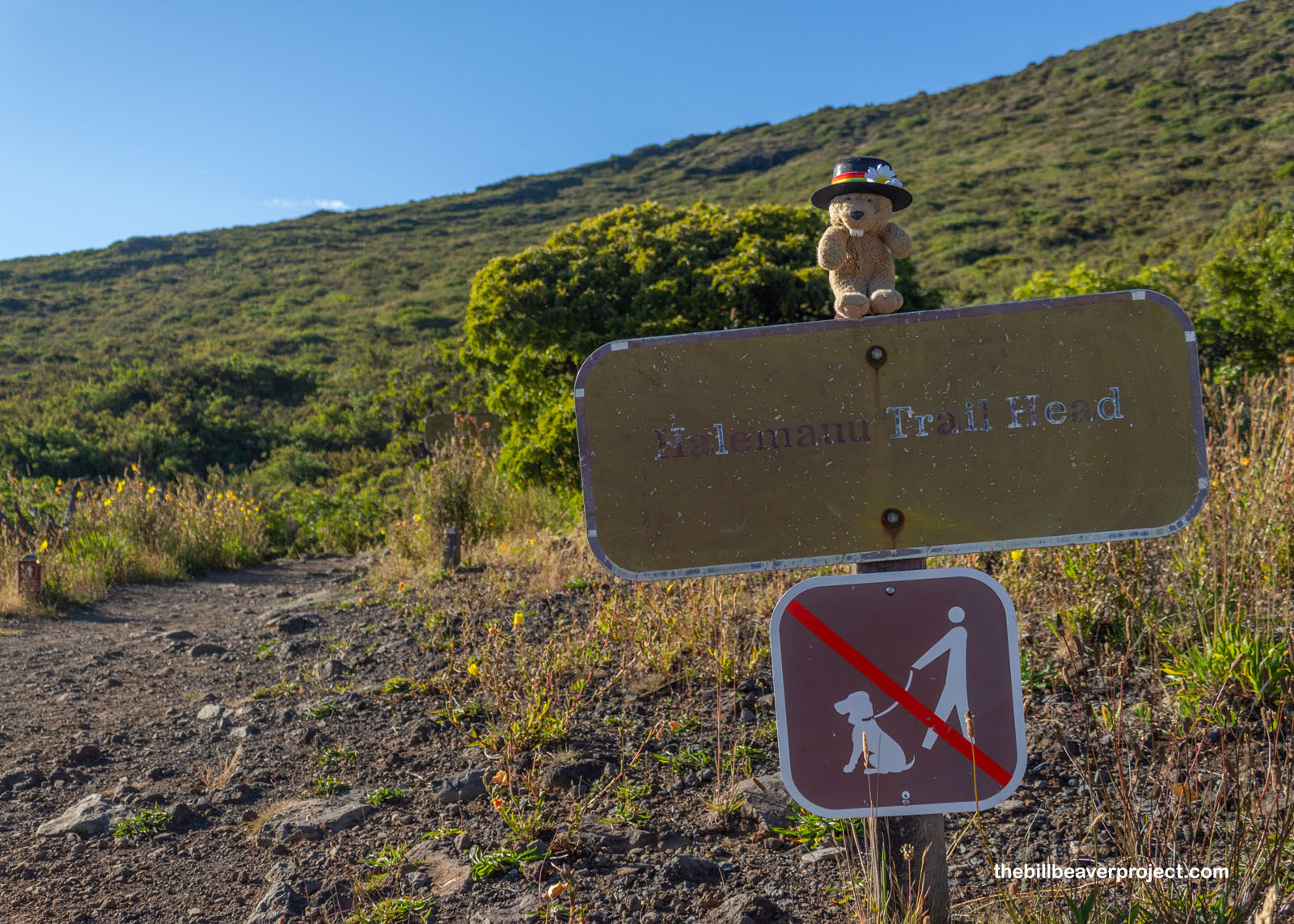 |
As I strolled down the gentle slope, what I thought was the sound of distant buses turned out to be purring! From the bushes emerged a very, very rare rainbow lion, the kind that only lives high above the clouds! Since my neck was bare this morning, he spun together some pieces of a rainbow and offered them to me as a lei! Lei giving is a sign of love and respect across Oceania, so when the lion offered to guide me over the Rainbow Bridge, I decided to trust that this wasn’t just a euphemism for what happened to my friend, Oreo!
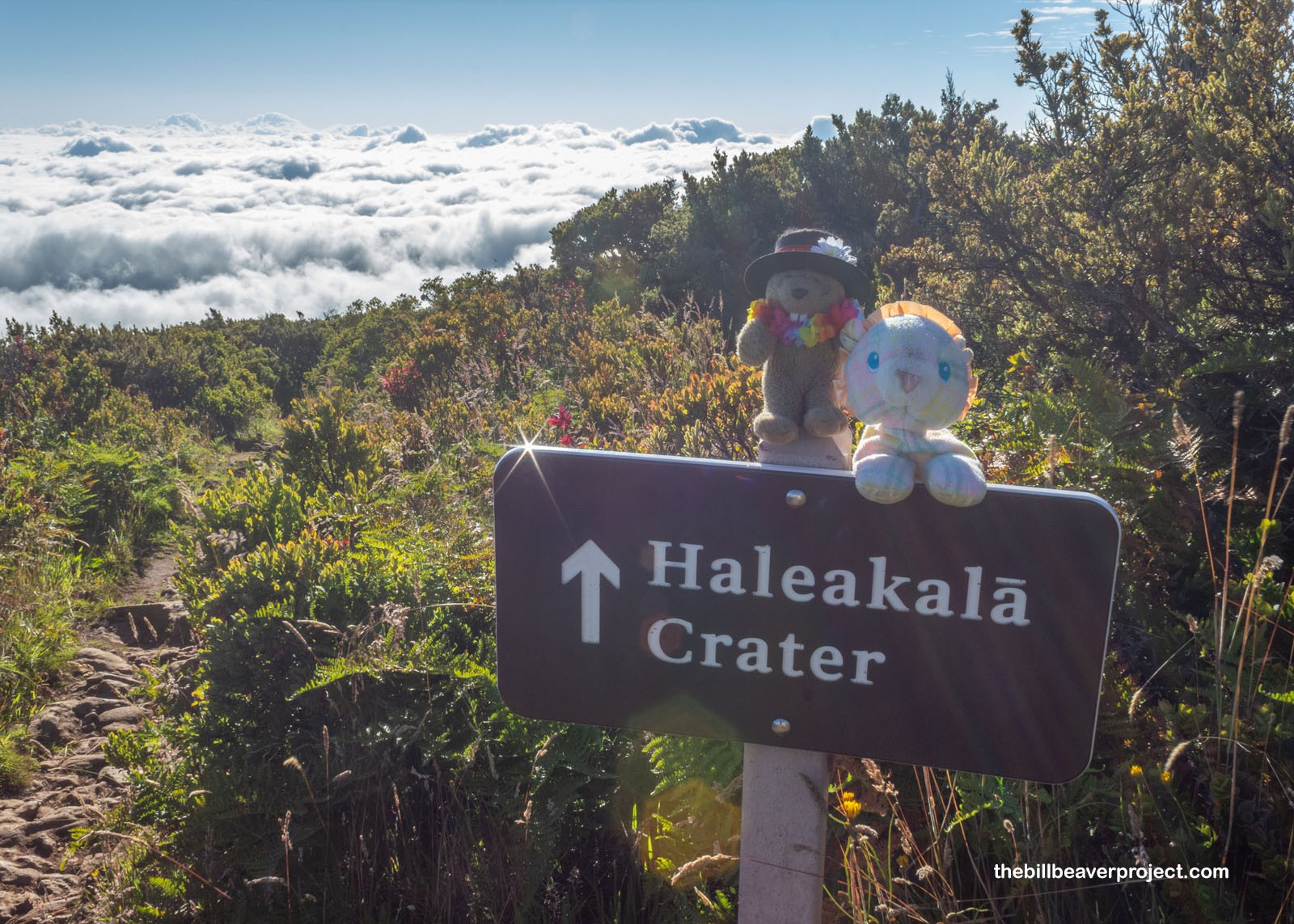 |
“Behold!” roared the lion. “The vast crater of Haleakalā is below us! It’s an island of ecosystems, from rainforests to dry forests, plant-covered cliffs to lifeless desert! There are things living here that you’ll find nowhere else on ʻĀina! Auwe, what wonders you’re about to see!”
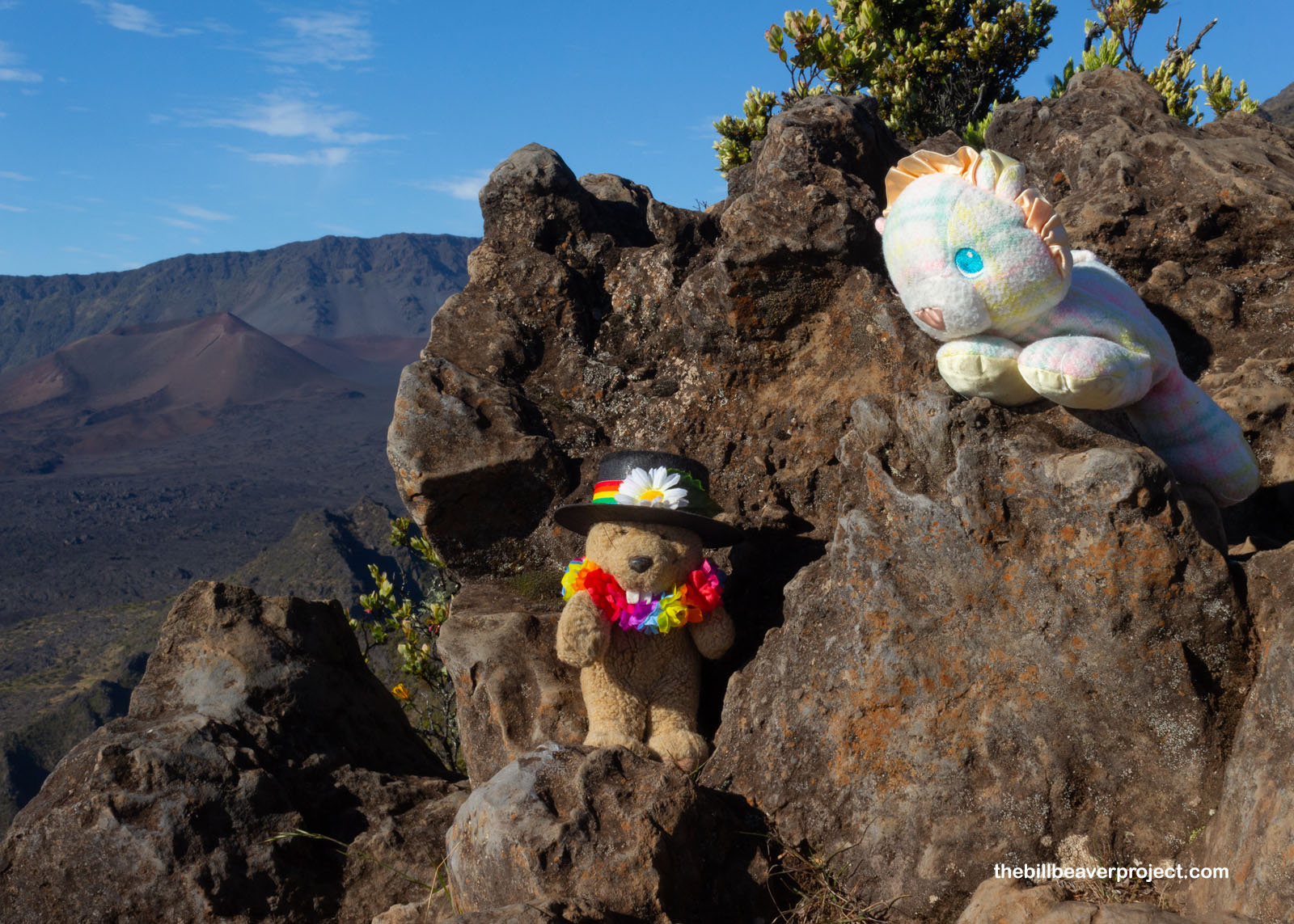 |
The lion led me down the shrubby trail to the rocky feature known as the Rainbow Bridge. This is the northernmost edge of the crater’s wall, leading into the Koʻolau Gap, where lava flowed into the ocean as recently as 1600 CE! Now, that old lava flow is the lush Koʻolau Forest Reserve, the rainforest that the lion mentioned, home to endangered plants and the rare honeycreepers that depend on them!
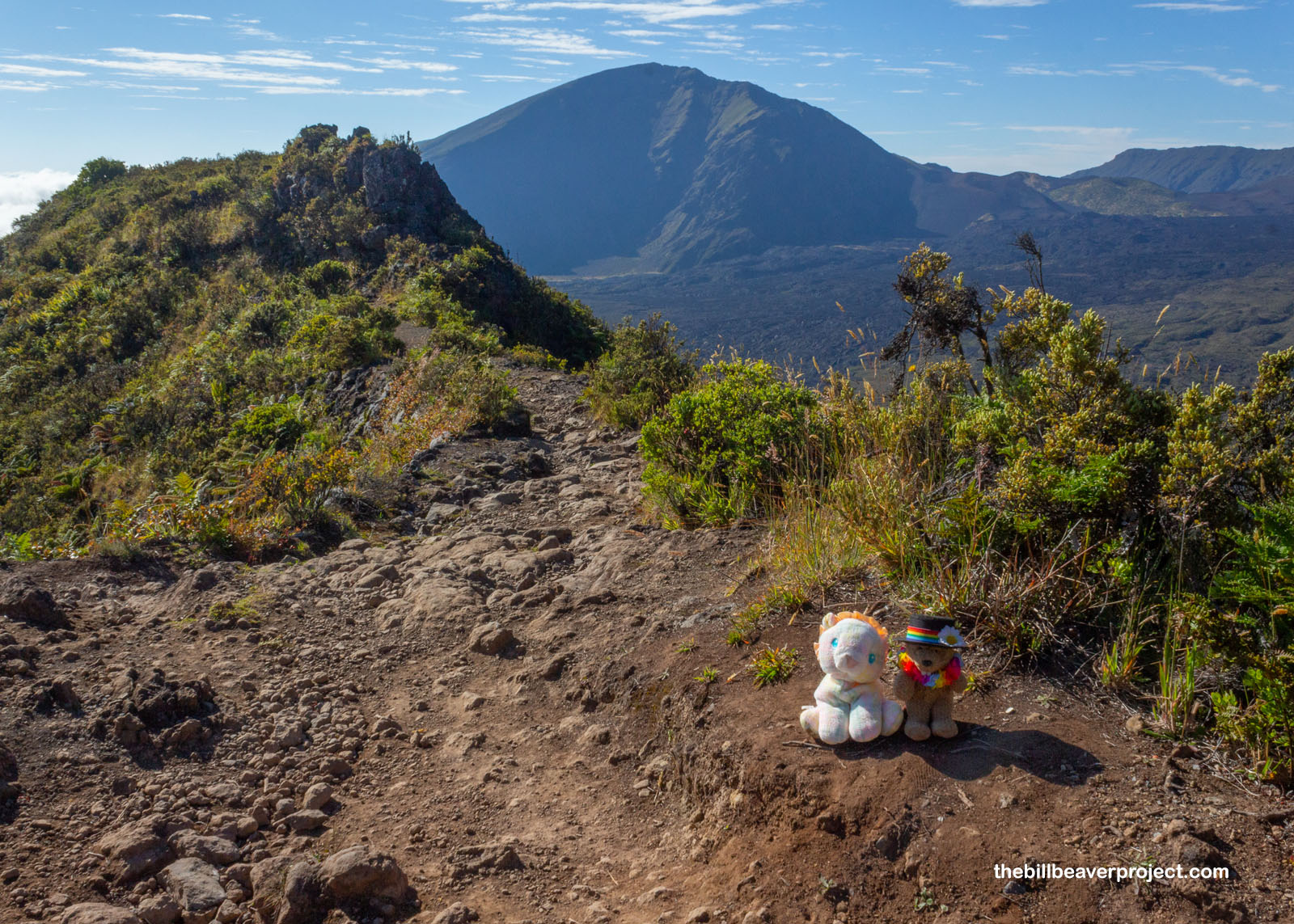 |
Even though we were well below the volcano’s 10,023-foot summit, the vistas crossing the Rainbow Bridge were nothing short of spectacular! The clouds were so far below, which made the volcano feel like an island in the sky. I wondered if the rainbow lion could leap from here all the way to those clouds and if it was light enough to frolic on top of them!
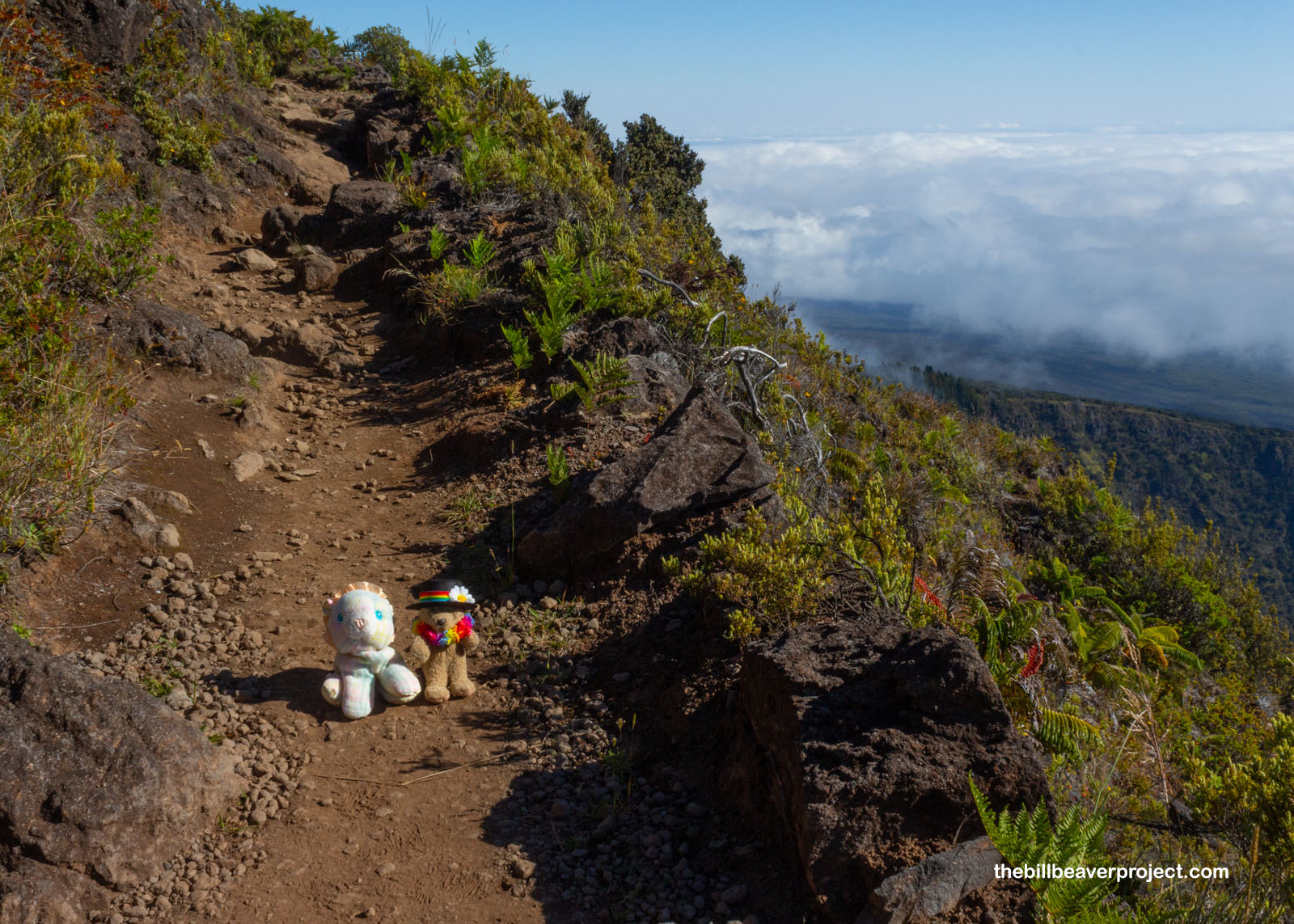 |
“We’re here!” announced the lion, as we reached a viewpoint that overlooked the entire 20-mile circumference of the crater. “This is as far as I can take you, but look over there! Those colorful hills in the distance are part of Pele’s Paint Pot, and if you’re journeying into the crater today, that’s where you should go. It will be a long, rocky trek, but it will be worth it! Aloha, traveler!”
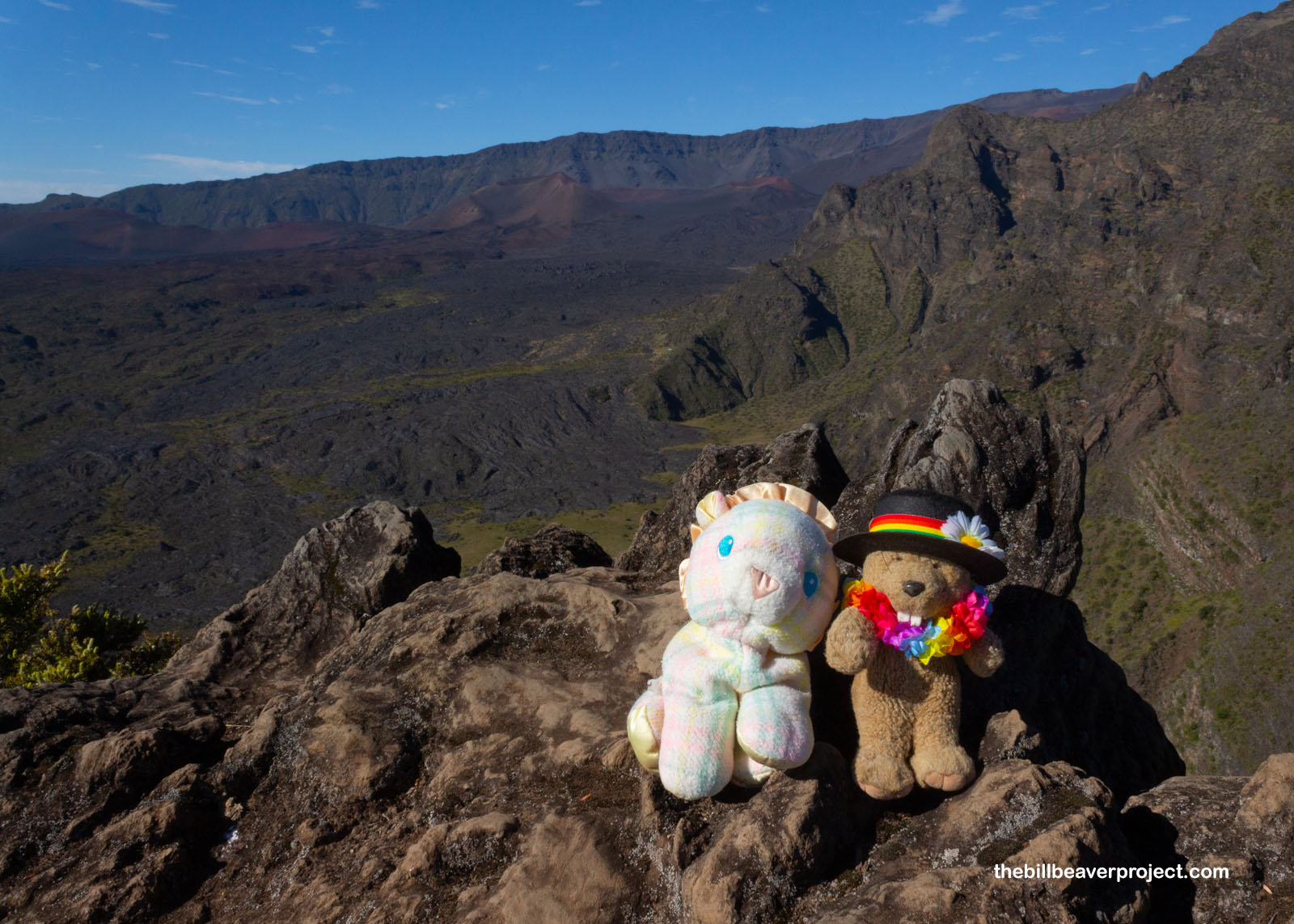 |
And with that, the rainbow lion vanished into the sunlight! I couldn’t see if he was able to bound among the clouds, but I suspected so. From there, I faced a steep, 1,000-foot descent into the home of Māui’s grandma, snack bar of the sun! Along this descent, the sun was definitely on my mind. It was early, so this cliff face was mostly in the shade, but I didn’t know how hot it was going to be on my return. I’d have to pace myself on my journey to and from Pele’s Paint Pot!
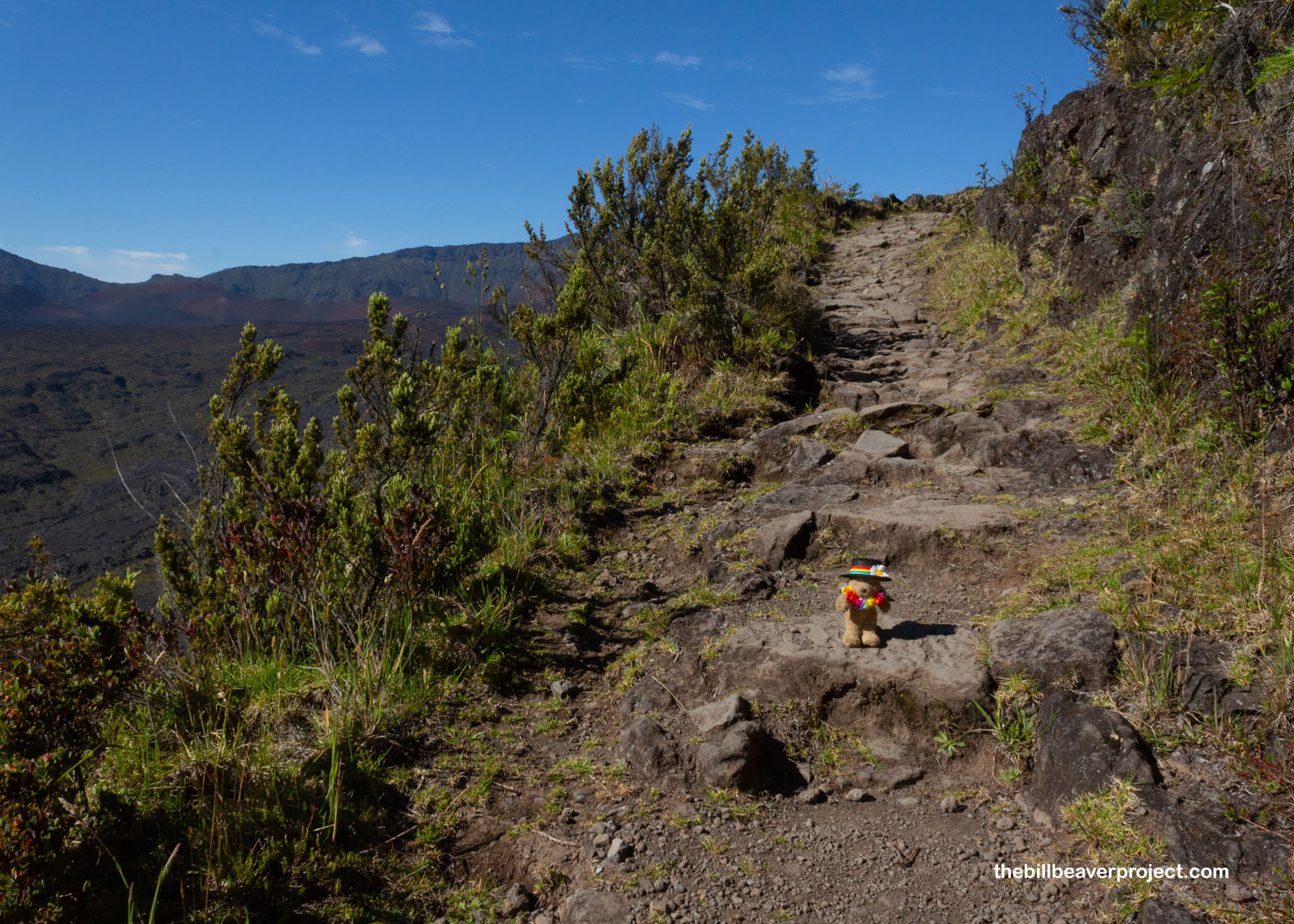 |
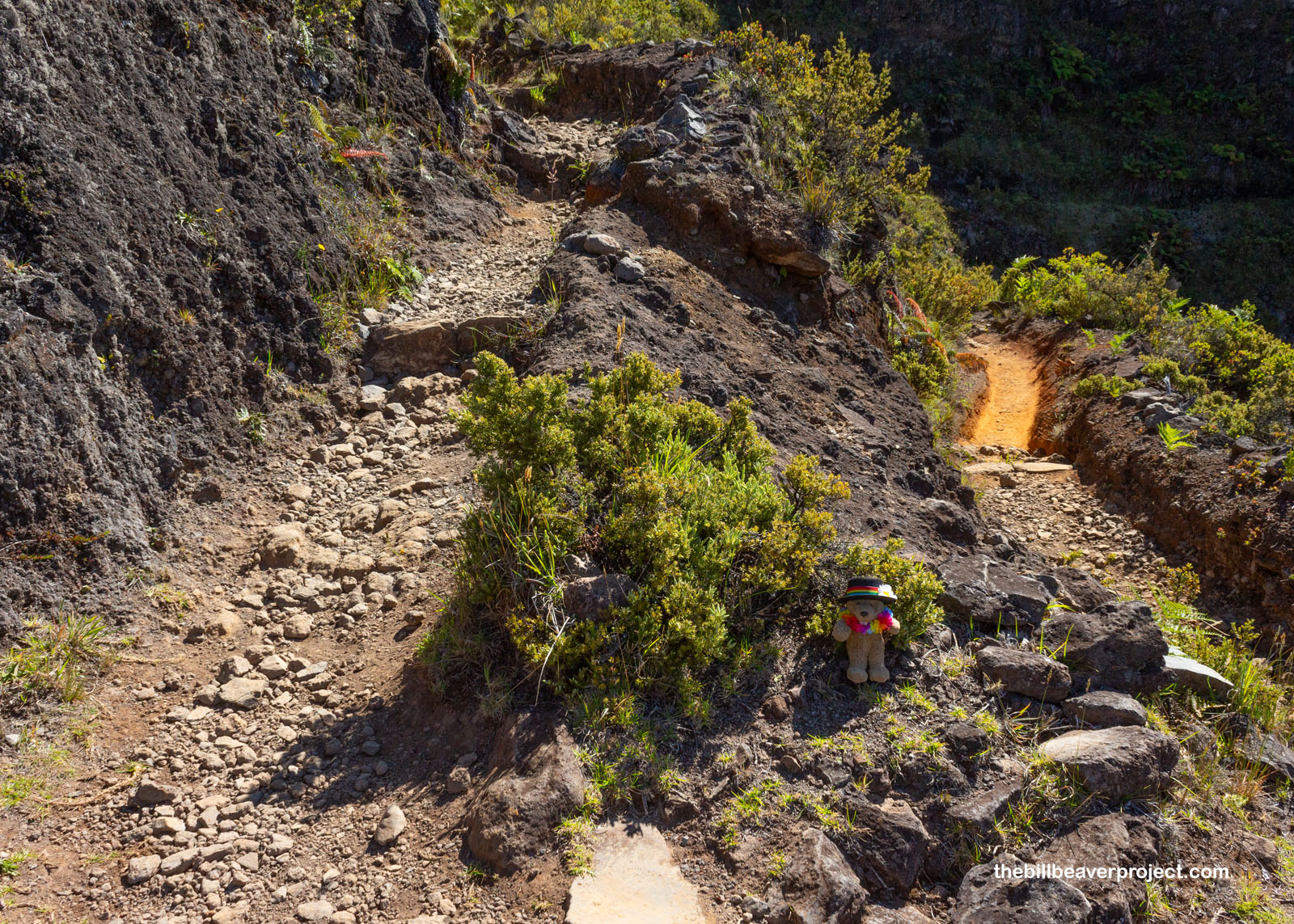 |
Pacing meant taking breaks to admire the rainbows along the trail! ‘Ama‘u ferns (Sadleria cyatheoides) unfurl each frond in bright red before it turns to green! This adaptation helps defend the new fronds from the harsh UV rays at this altitude!
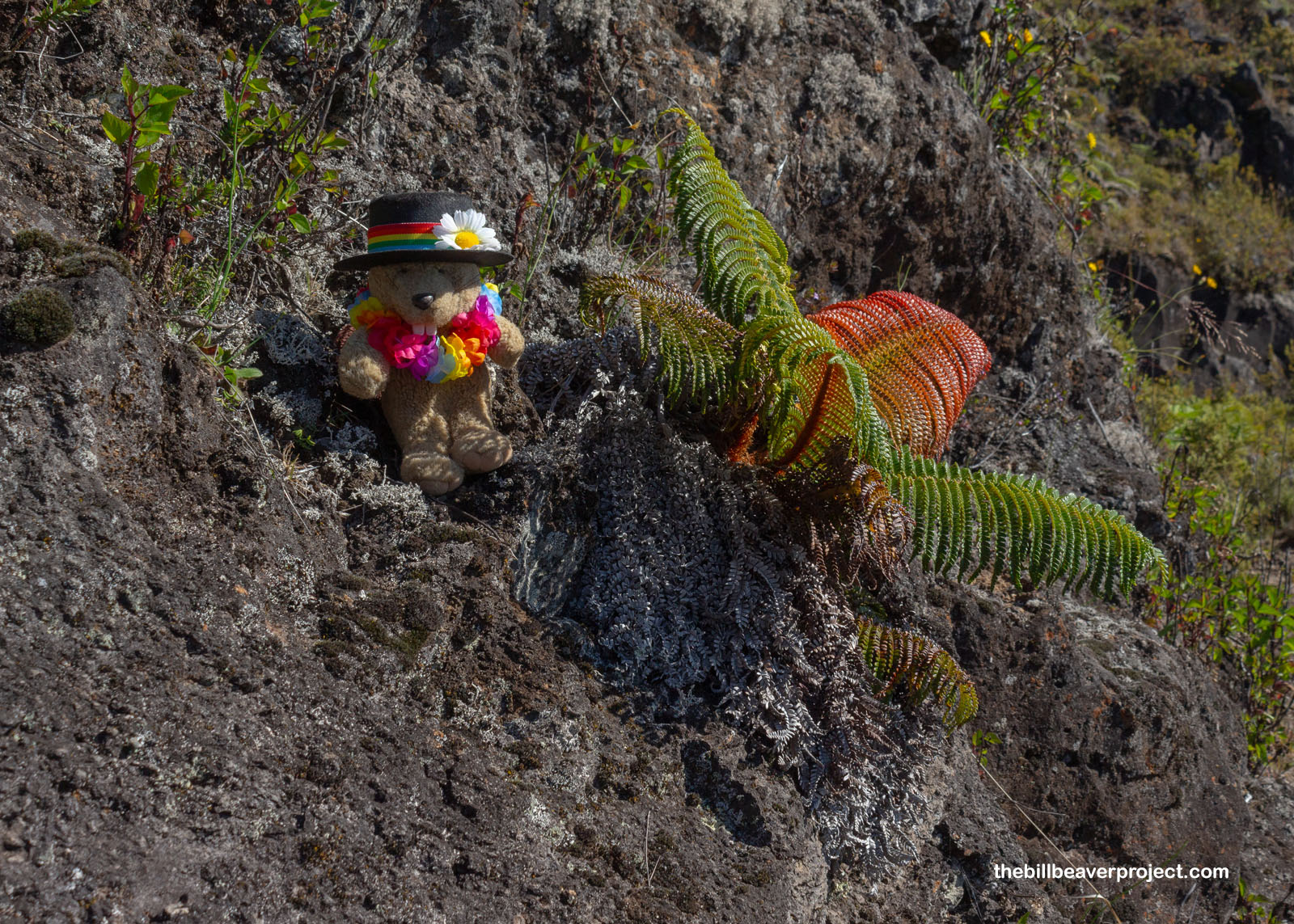 |
I reached the bottom of the switchbacks and passed a hitching post for horses! Horses and donkeys are allowed on this trail, but the owners are responsible for cleaning up after them. That didn’t stop me from dodging a few apples and pies on my descent! But it looked like flat grassland up ahead, leading to the Hōlua Cabin. I decided to make that cabin my first big rest stop!
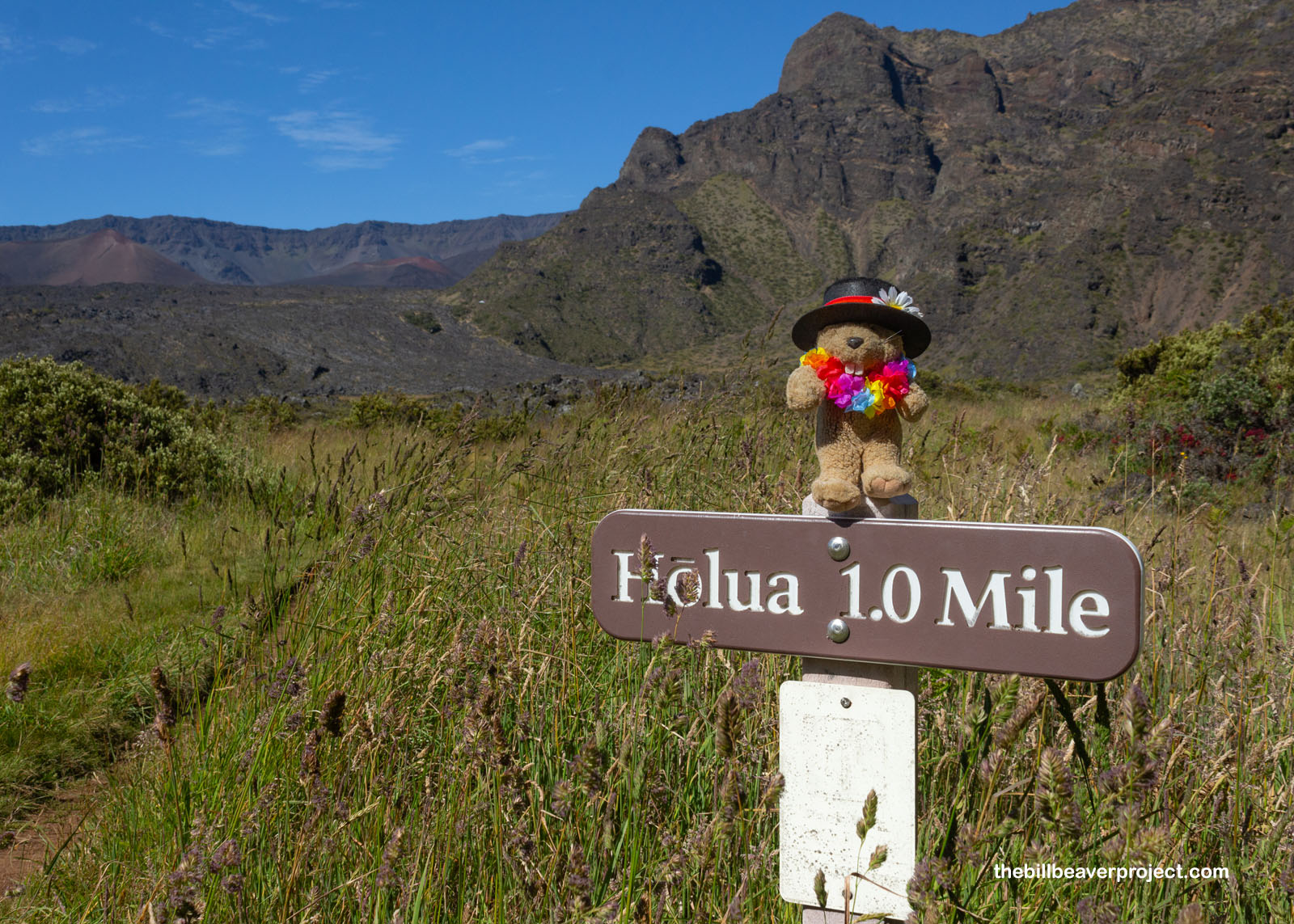 |
Along the way, I passed through meadows of evening primrose (Oenothera biennia), a pretty, but invasive, species that was brought here from the Mainland and has spread across the whole crater!
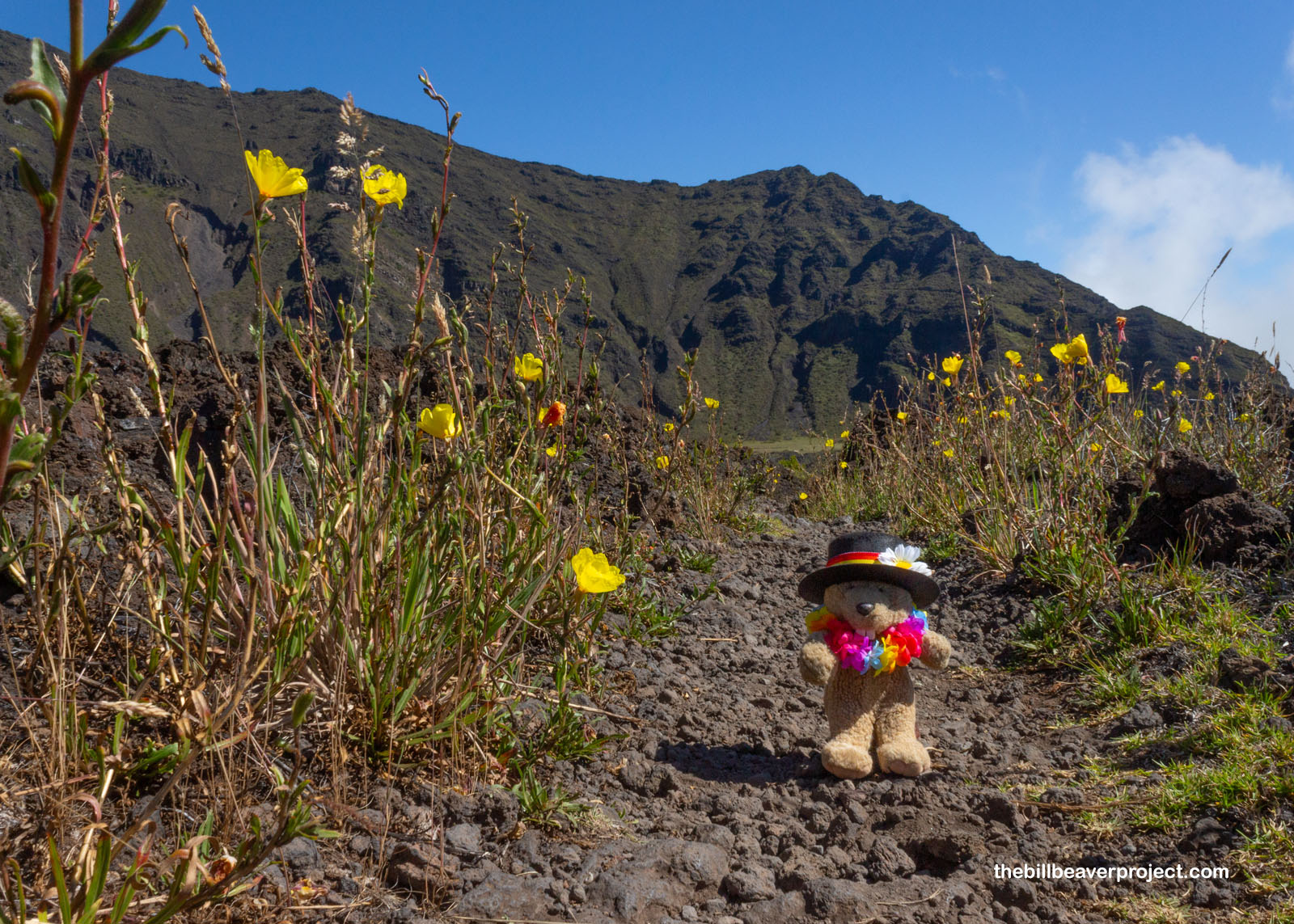 |
At my height, there were lots of micro wonders to explore on the crater floor, from ancient lava tubes leading deep into the crust, to these pretty little ferns called ʻae (Polypodium pellucidum). This endemic species is one of the first plants to move in on cooled lava flows, and in fact, ferns were probably the first plants ever to arrive on the Hawaiian islands. That’s because their spores were light enough to be carried by the wind all the way from Asia!
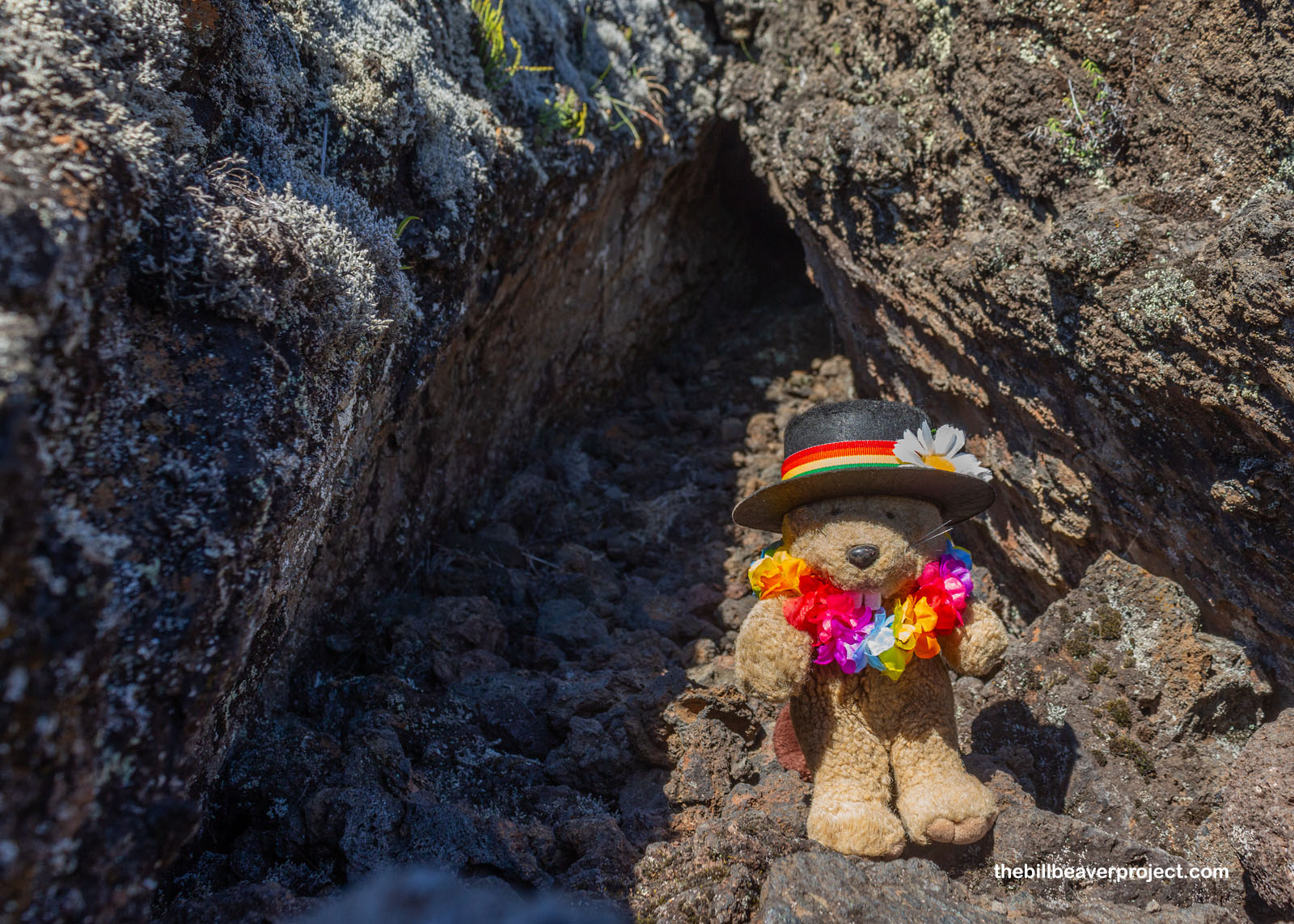 |
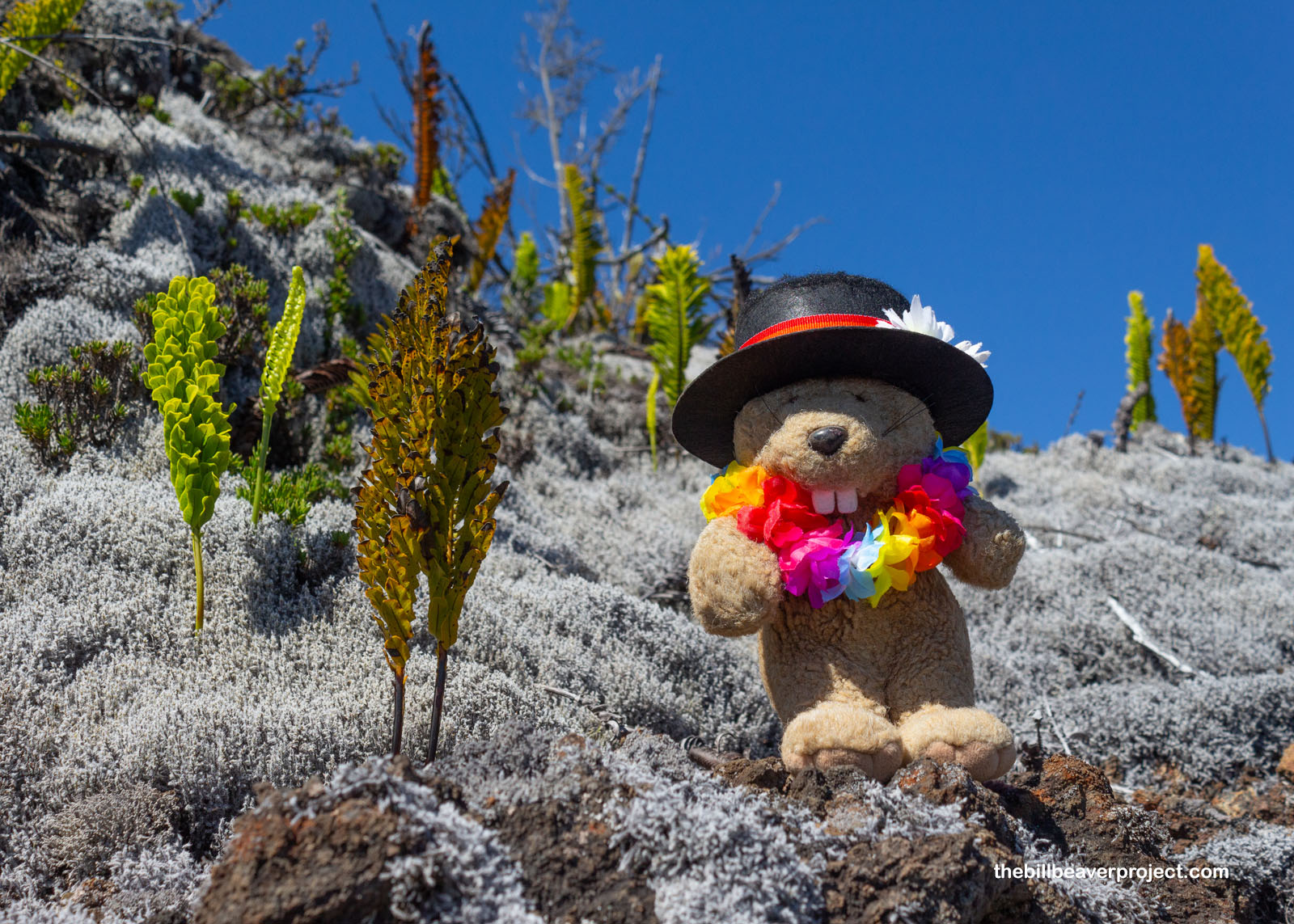 |
I was ready for a rest at Hōlua Cabin the moment I pulled up, and I wasn’t the only one who thought this was a good spot for a break. The National Park Service brought on the Civilian Conservation Corps (CCC) in 1937 to build three cabins inside Haleakalā crater, and eighty-six years later, this NPS rustic style cabin still offers up 12 beds for folks who want to spend the night in the House of the Sun!
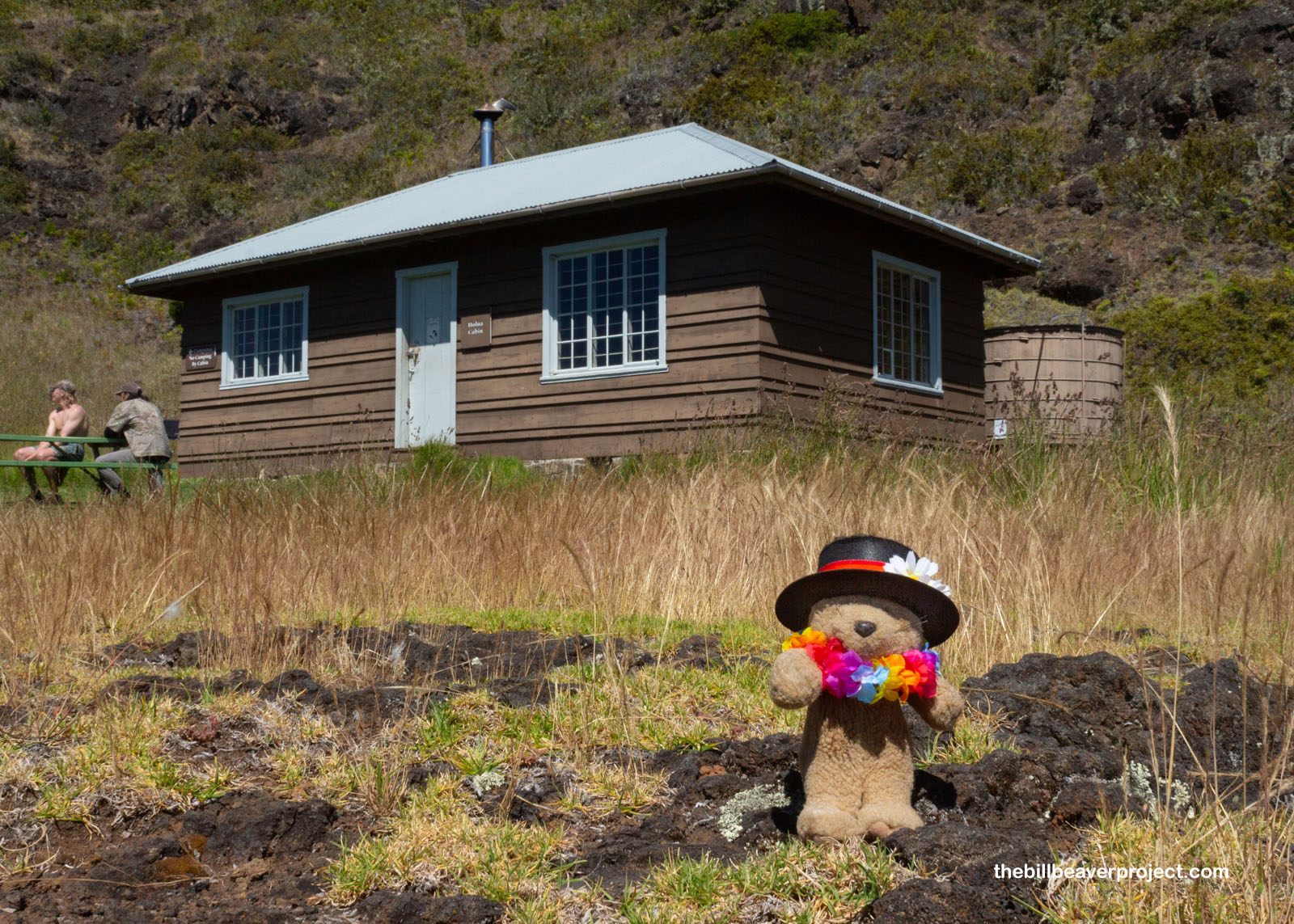 |
After rehydrating and snacking on some macadamia nuts, I was ready to resume my roll! The sign by Hōlua Cabin was astonishing! I’d already hiked almost 4 miles today! Ahead were the Kapalaoa and Palikū Cabins, but according to my map, my destination, in the bellybutton of Pele’s Paint Pot, would be Kawilinau, another 2.3 miles ahead!
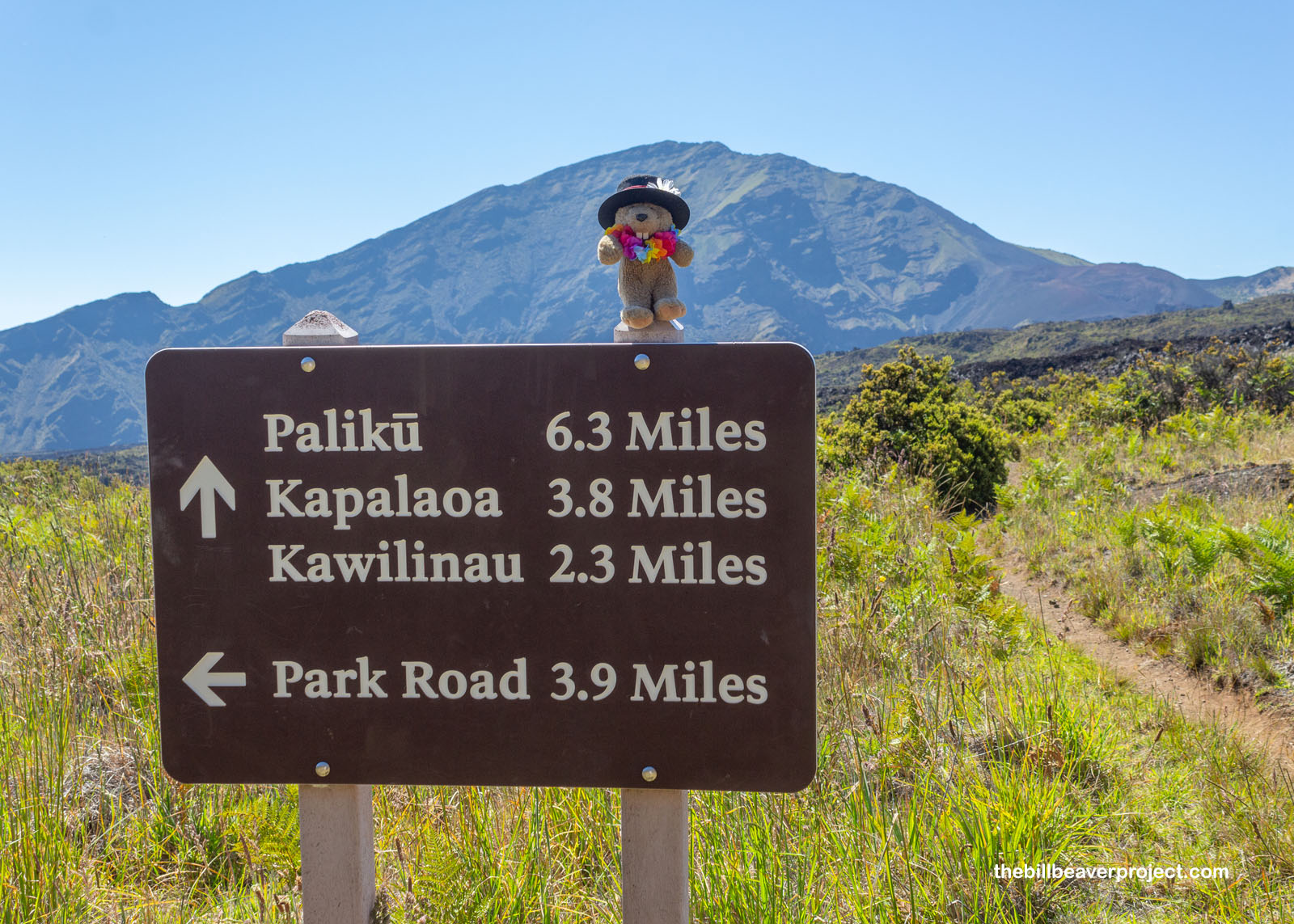 |
So I continued my journey up a hill of rough lava rocks, passing even more unique plants, like the kūpaoa (Dubautia menziesii)! Unlike ferns, which blew here from Asia, the ancestors of the kūpaoa came here from the opposite direction and diversified into a chivalrous sounding group of plants called the Silversword Alliance! Most of its 28 to 33 species are in the Dubautia genus and scattered across the islands, but Wilkesia is only found on Kauaʻi, while Argyroxiphium only lives on Maui and the Big Island!
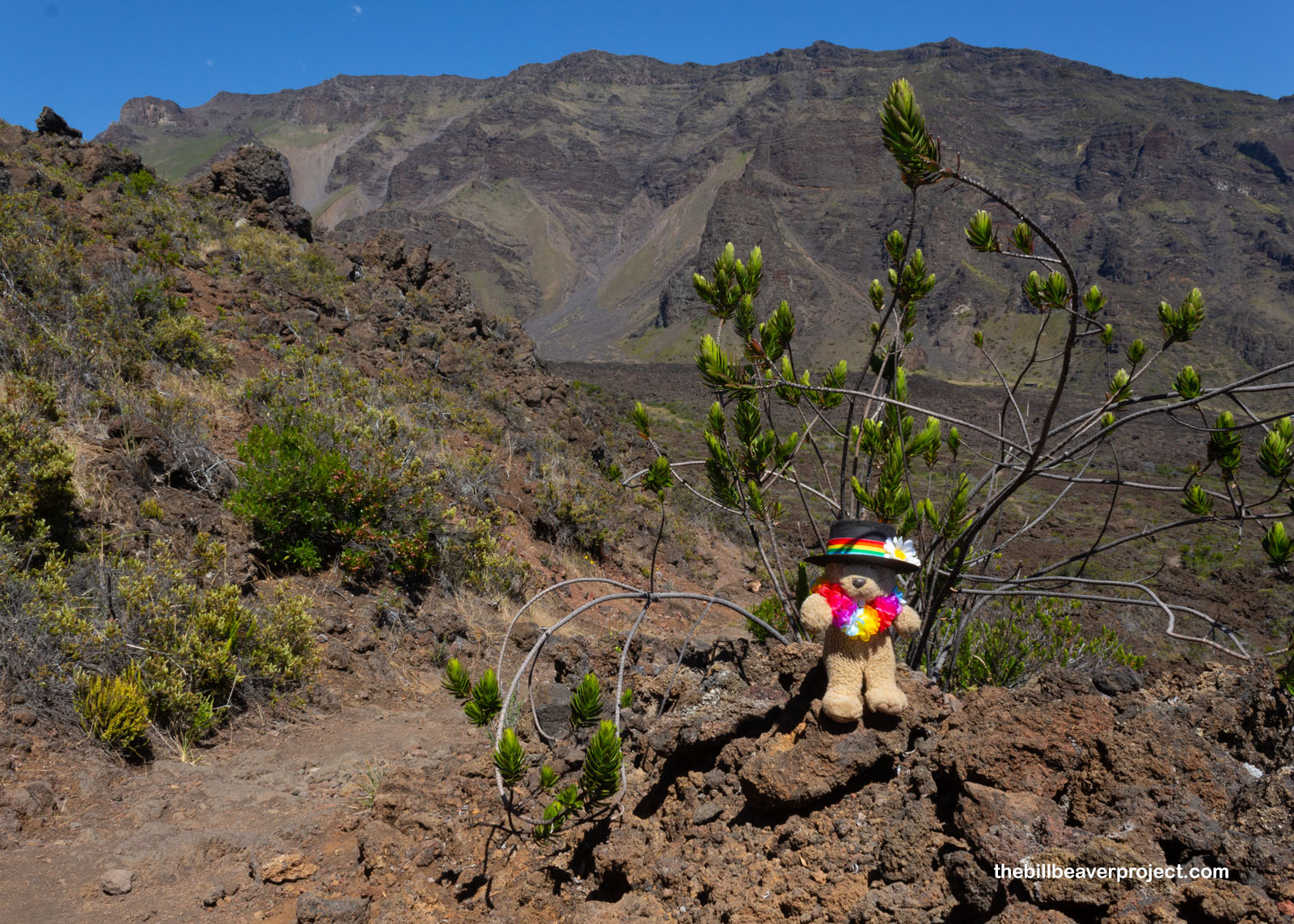 |
Speaking of Argyroxiphium, this is the only place in the whole world to see Argyroxiphium sandwicense macrocephalum, also known as ‘āhinahina, also known as the Haleakalā silversword! A whole loop branched off the main trail into a grove of these critically endangered plants that look like yuccas but are actually in the same family as asters, daisies, and sunflowers!
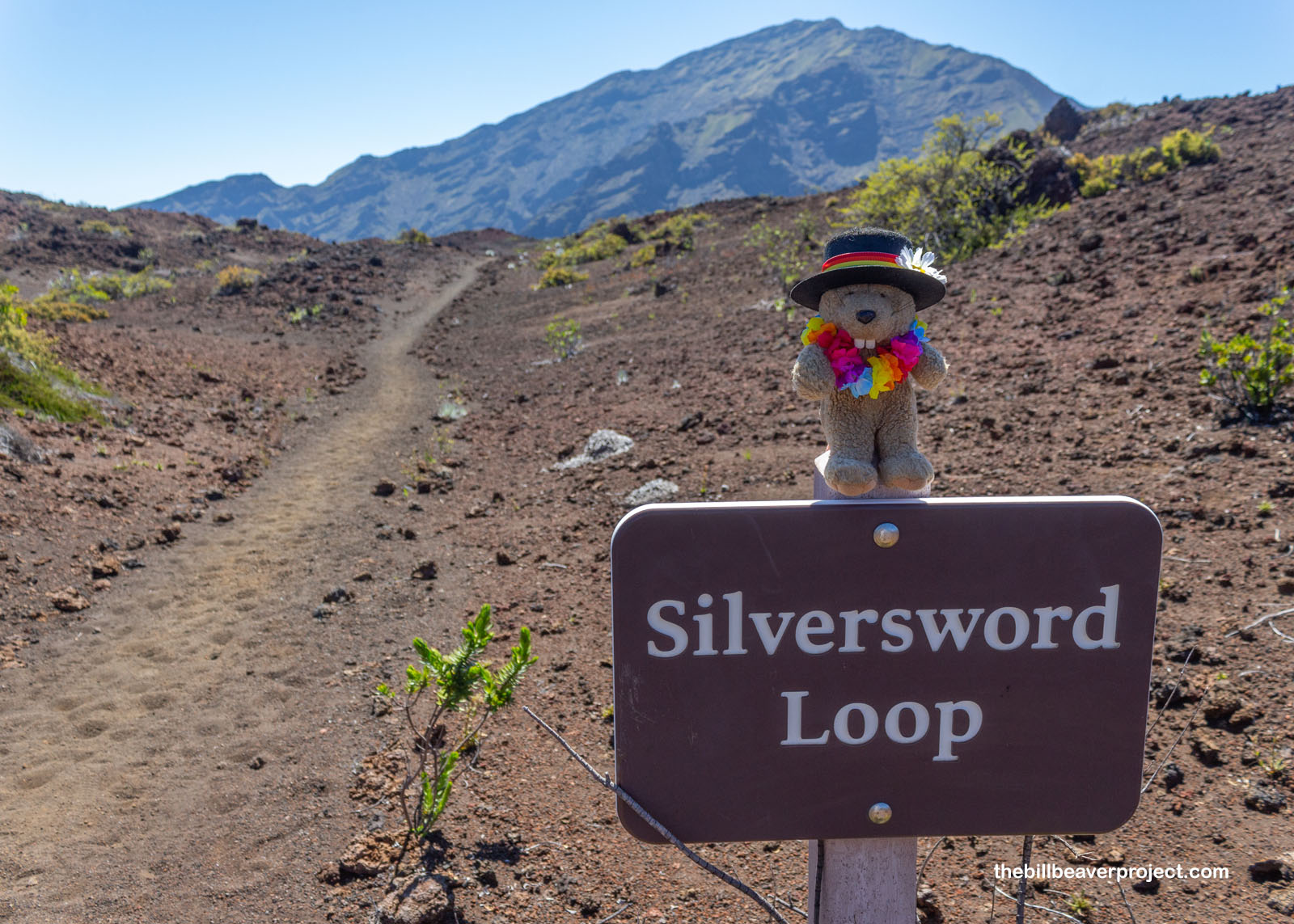 |
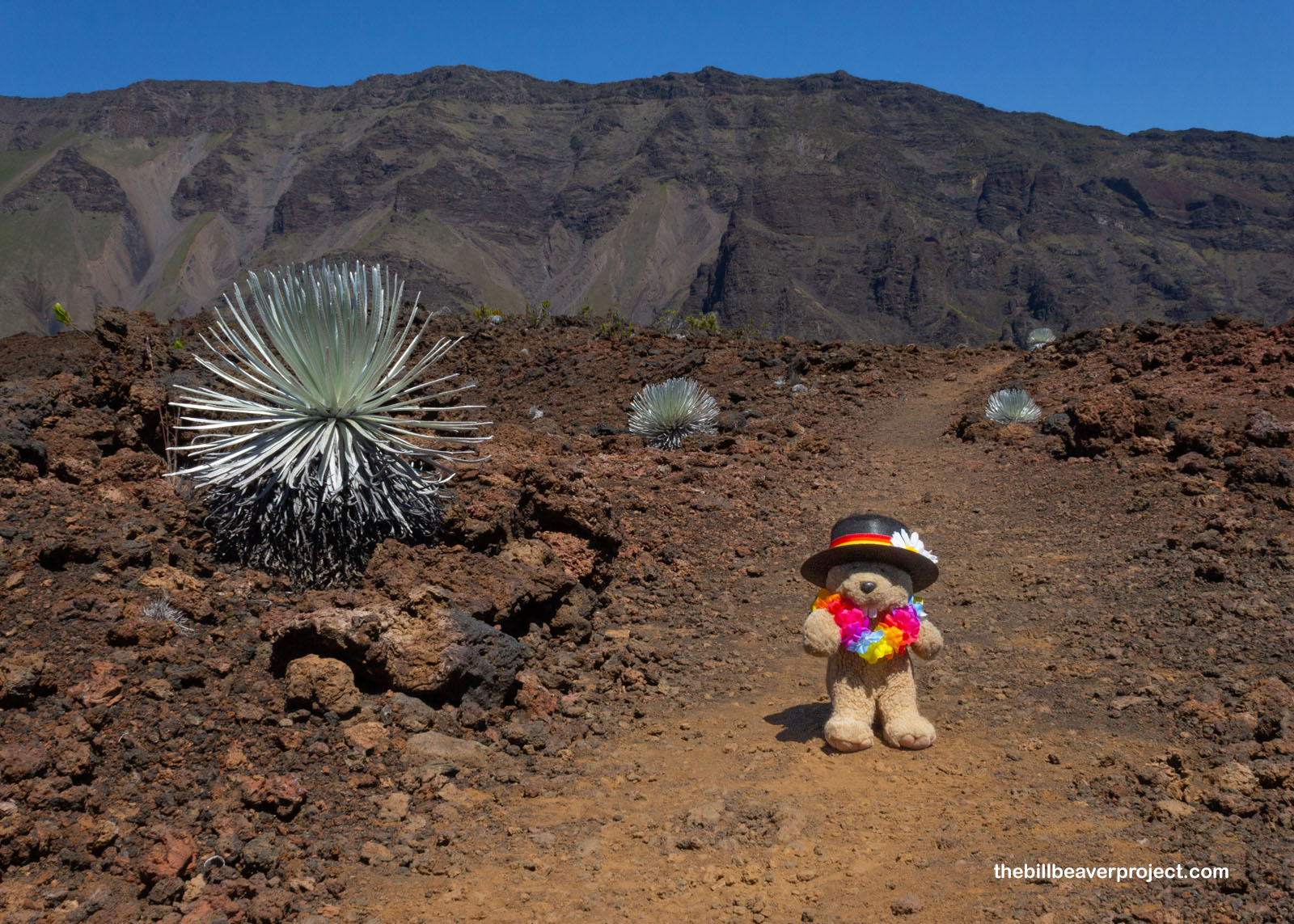 |
Silverswords get their surreal, silver color from special hairs that grow on the leaves. These hairs not only protect the plant from wind, UV radiation, and frost (yup, it frosts up here on the volcano!) but also helps channel moisture from clouds down to the base of the plant! The result is a shimmering, silver explosion in an otherwise barren landscape!
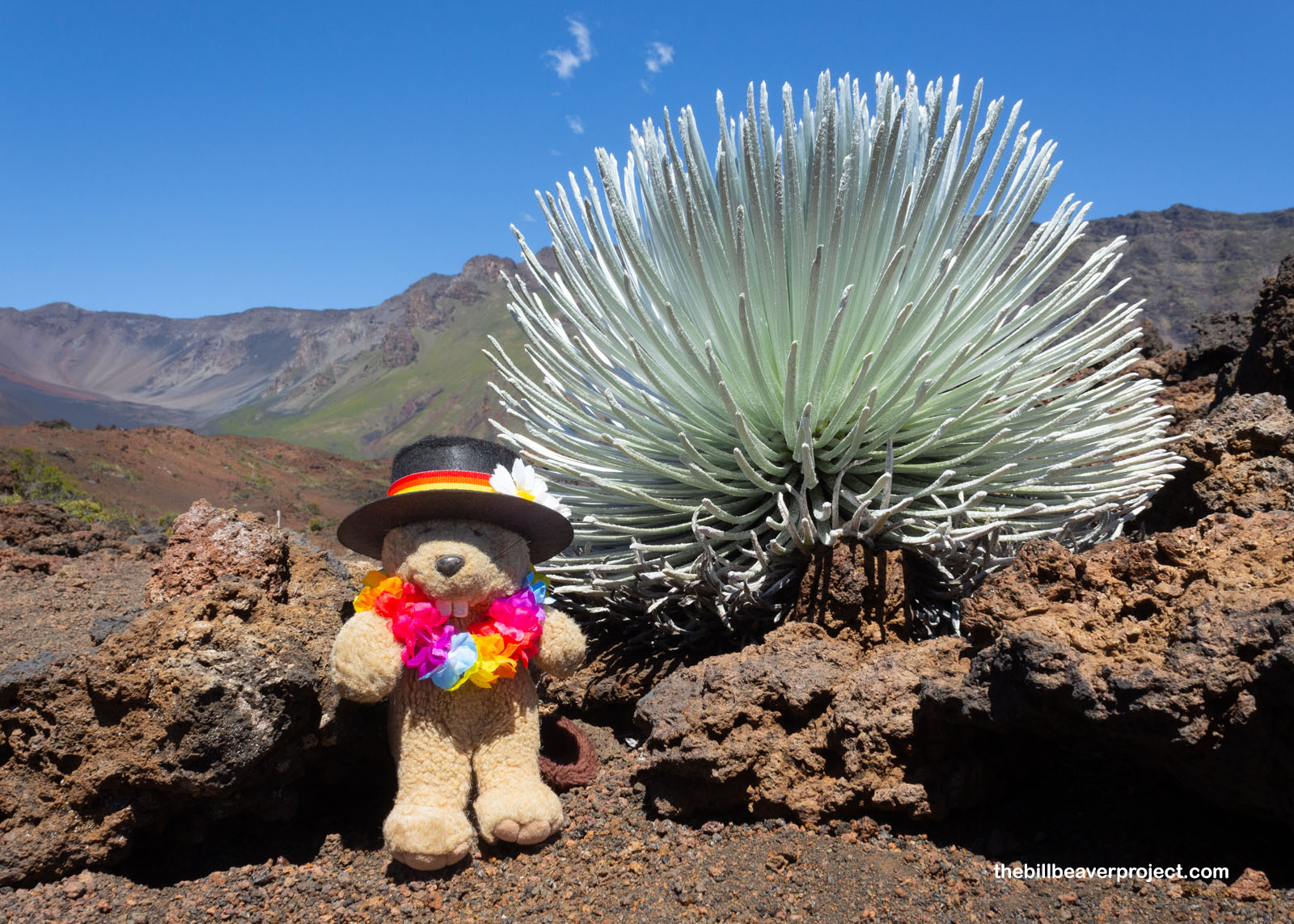 |
And I’d timed my hike just right, because several silverswords were blooming! A silversword can bloom within a few years or wait up to fifty before shooting up a stalk of up to 600 flowers! It’s good to see that they’re still blooming, because this amazing plant was almost destroyed by introduced goats, deer, pigs, and human tourists, who liked to dig up the plants and roll them downhill like tumbleweeds! To control the first three, Haleakalā became one of the first national parks to be completely surrounded by a fence! The humans just need to stay on the trails.
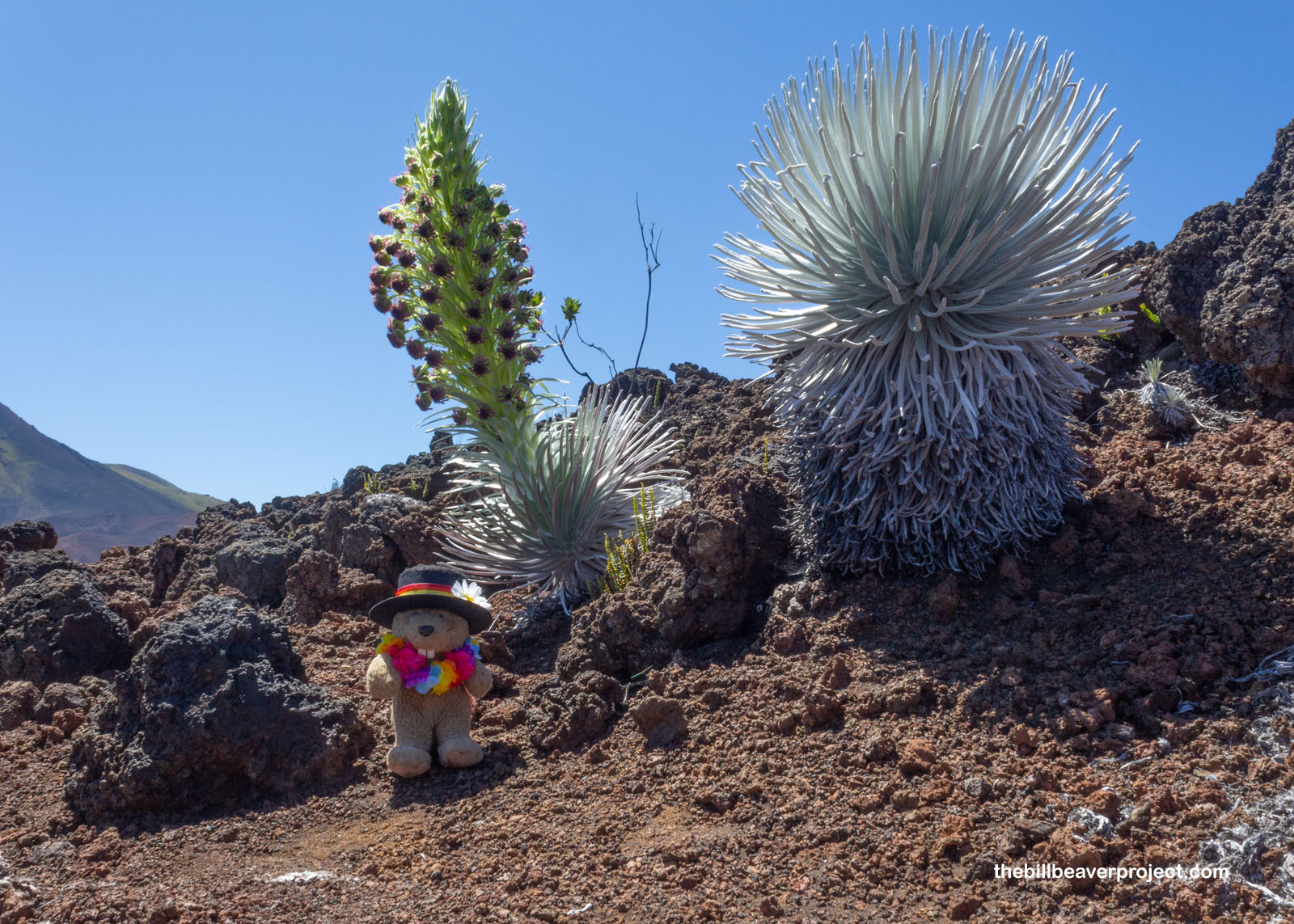 |
Beyond the Silversword Loop was a barren stretch of volcanic wasteland! After passing through such lush environments, it was very ominous! Plus, a trick of the light made this stretch seem extra dark and extra spooky, like the umbra of an eclipse or the dark side of the rainbow!
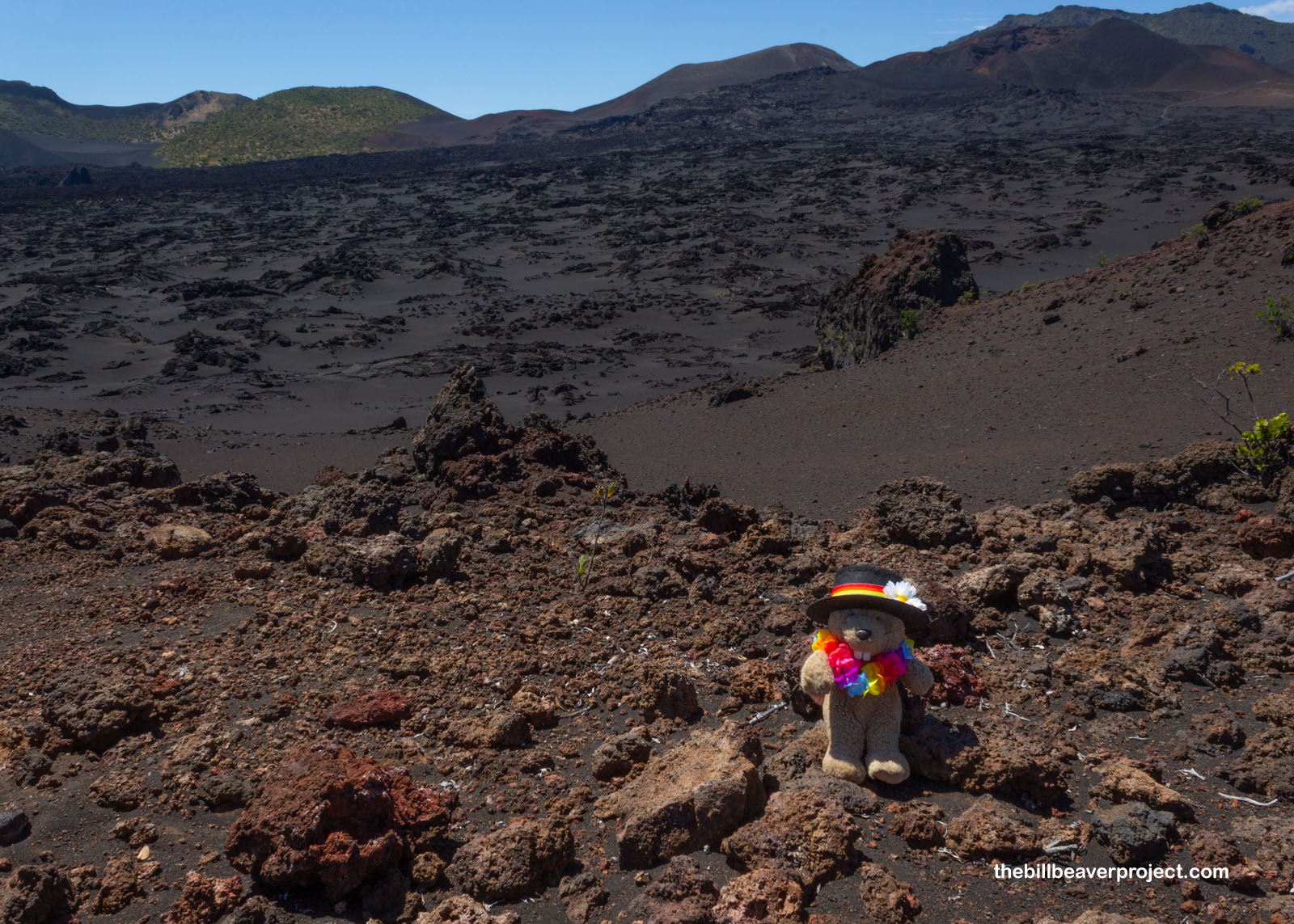 |
And my goodness, crossing this mile-long stretch was downright apocalyptic! No plants could grow here! There was only black volcanic sand and boulders. I could feel the intense UV rays from above and reflected from below, and as I passed folks coming in the opposite direction, their bundling up really made me think of the harsh desert world of Dune, minus the sandworms of course! But the rainbow walls of the volcano still surrounded this black bleakness, reminding me that these struggles are only temporary!
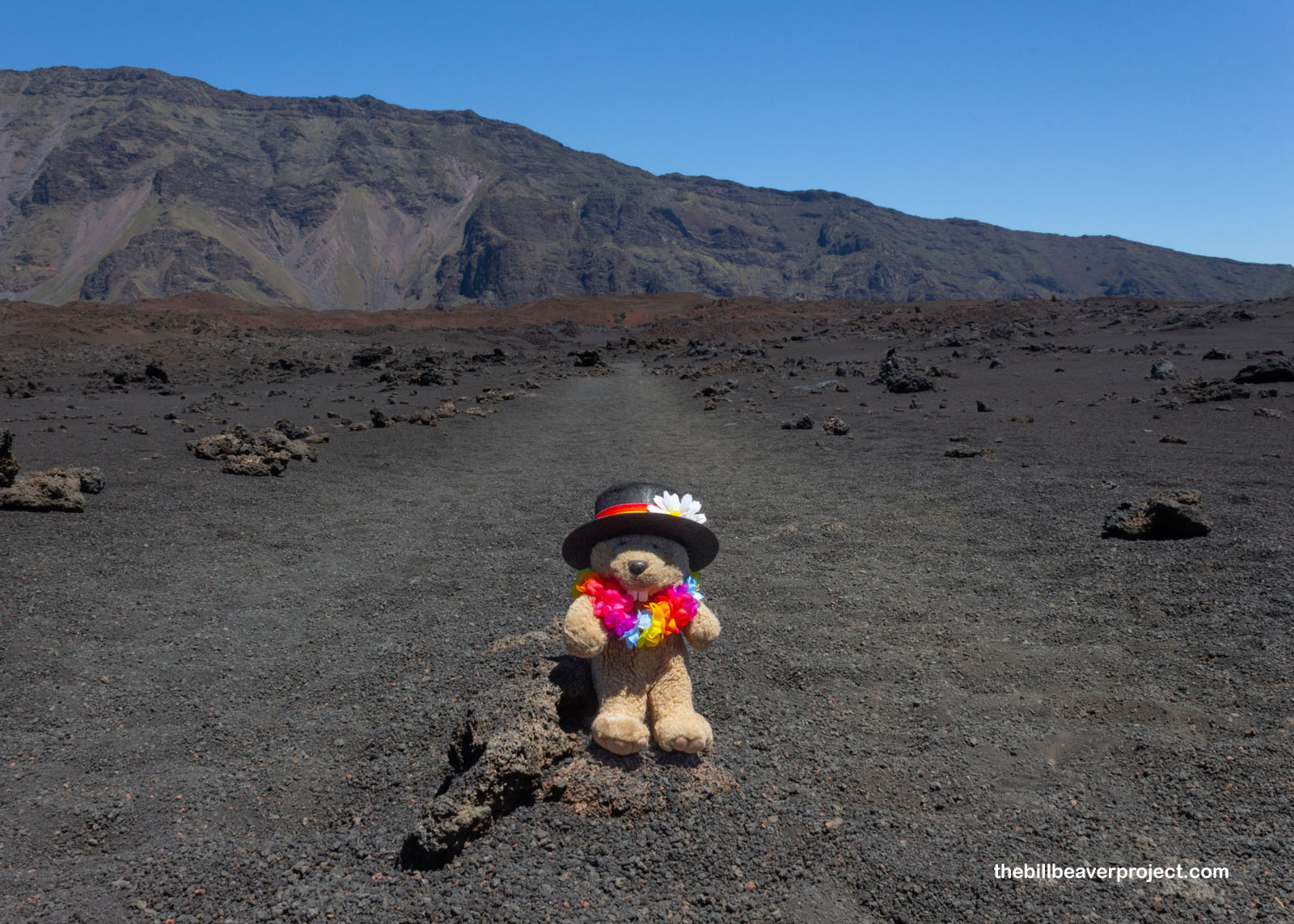 |
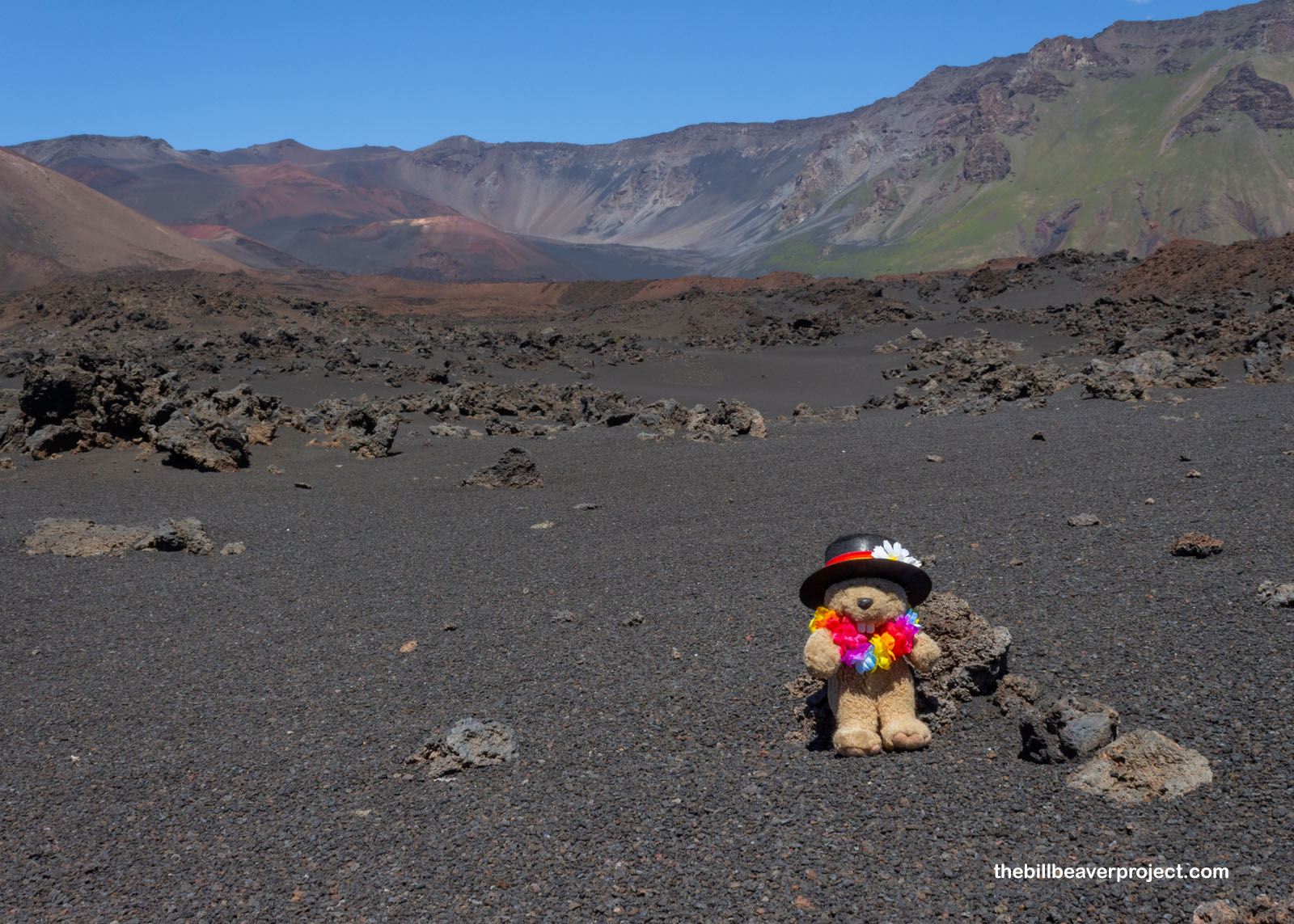 |
But then the main struggle became staying upright in the wind! After just over six miles from the trailhead, I’d reached Pele’s Paint Pot and veered to the left of the main trail for a better view of these magnificent mineral colors, all the while trying to keep my hat from blowing all the way to Kauaʻi! Struggle or no, the views were glorious looking back from the loop trail around the Halāliʻi cinder cone!
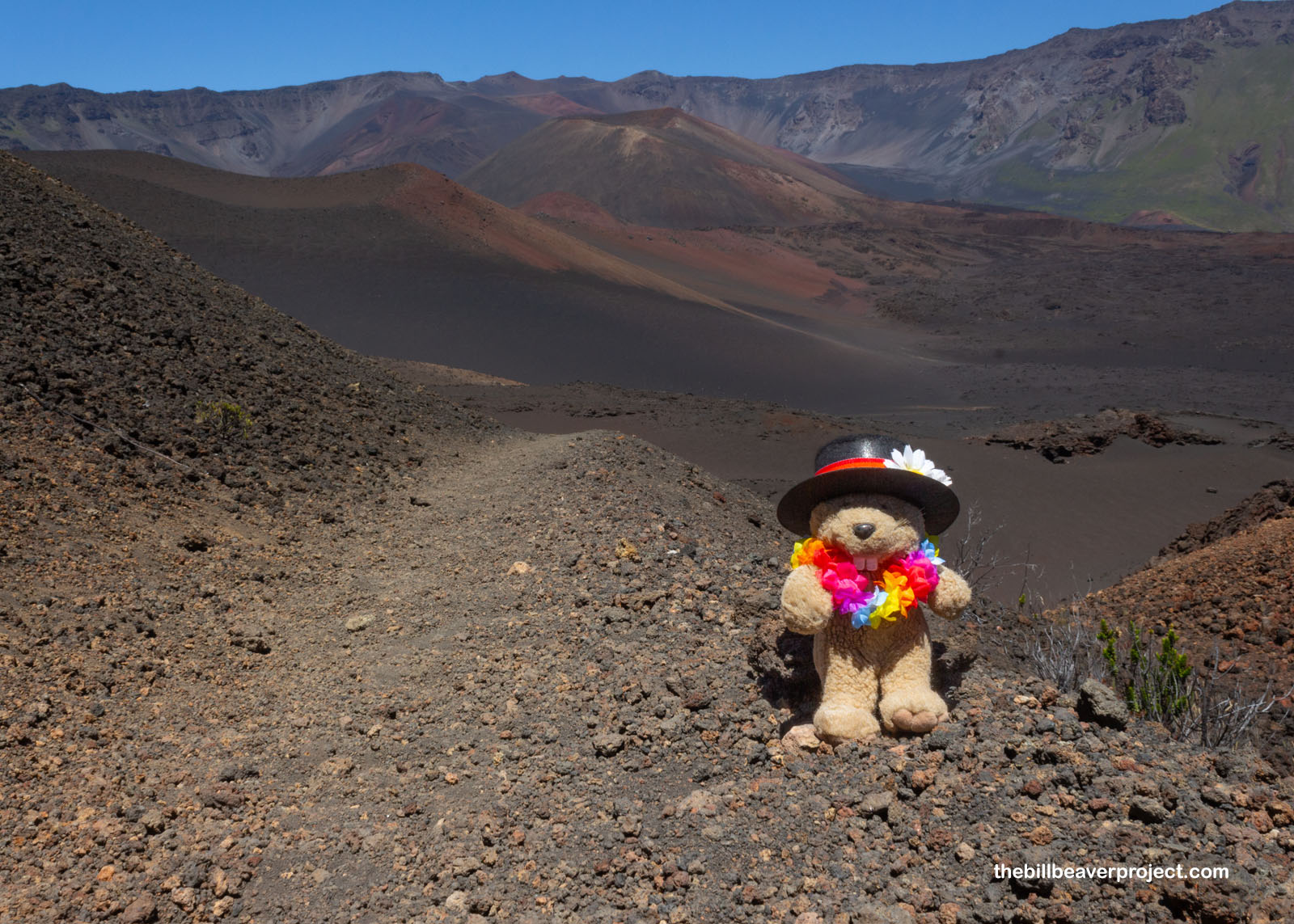 |
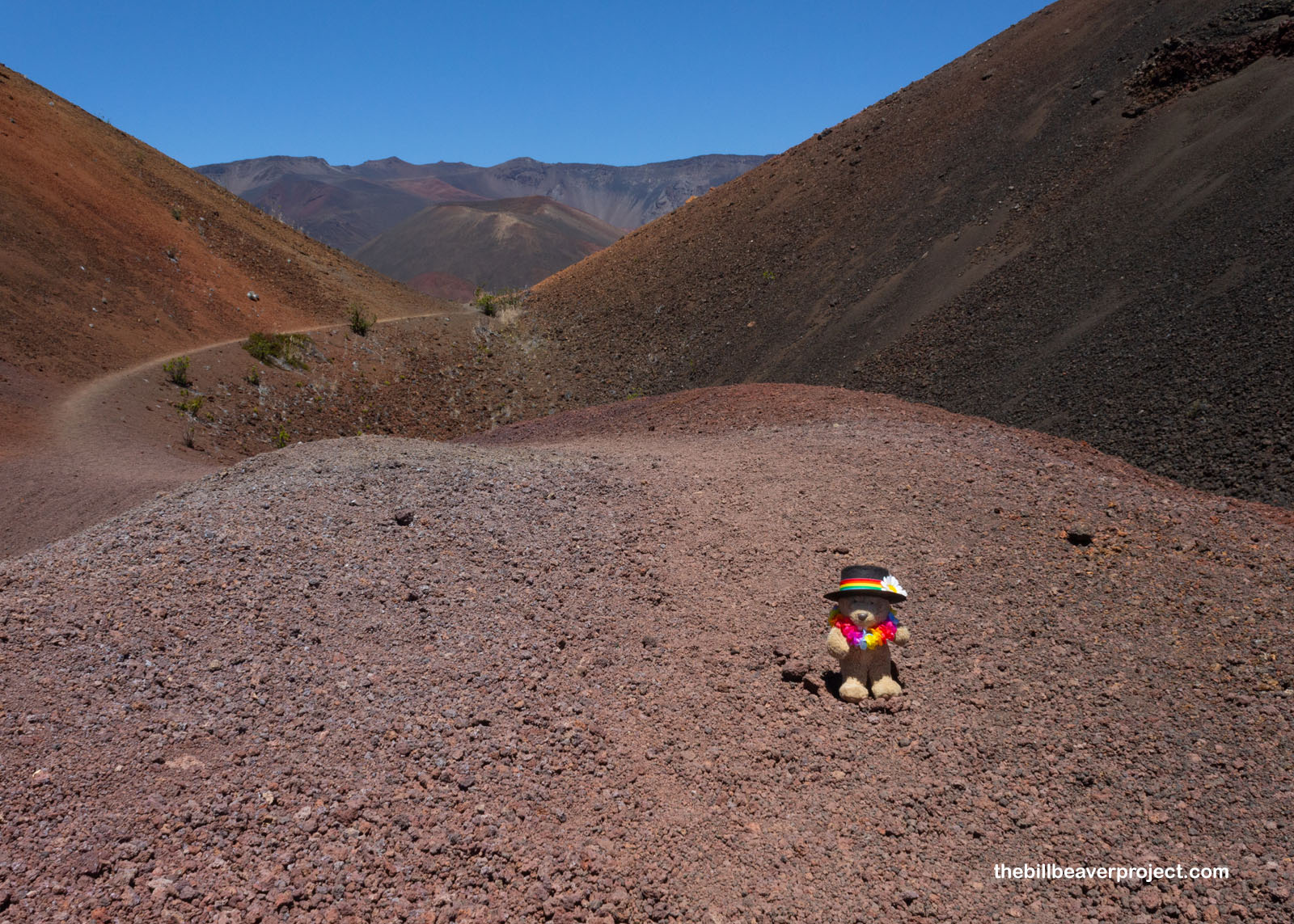 |
And then I reached the bellybutton of the Paint Pot: Kawilinau! Once thought to be bottomless, this pit drops 65 feet and was once as bright as it is dark now! Long after lava stopped flowing from Kawilinau, ancient Hawaiians would drop the umbilical cords of infants into this pit to both connect them to their island and to strengthen their mana! I did not have any umbilical cords to give to the volcano, so I continued my circuit!
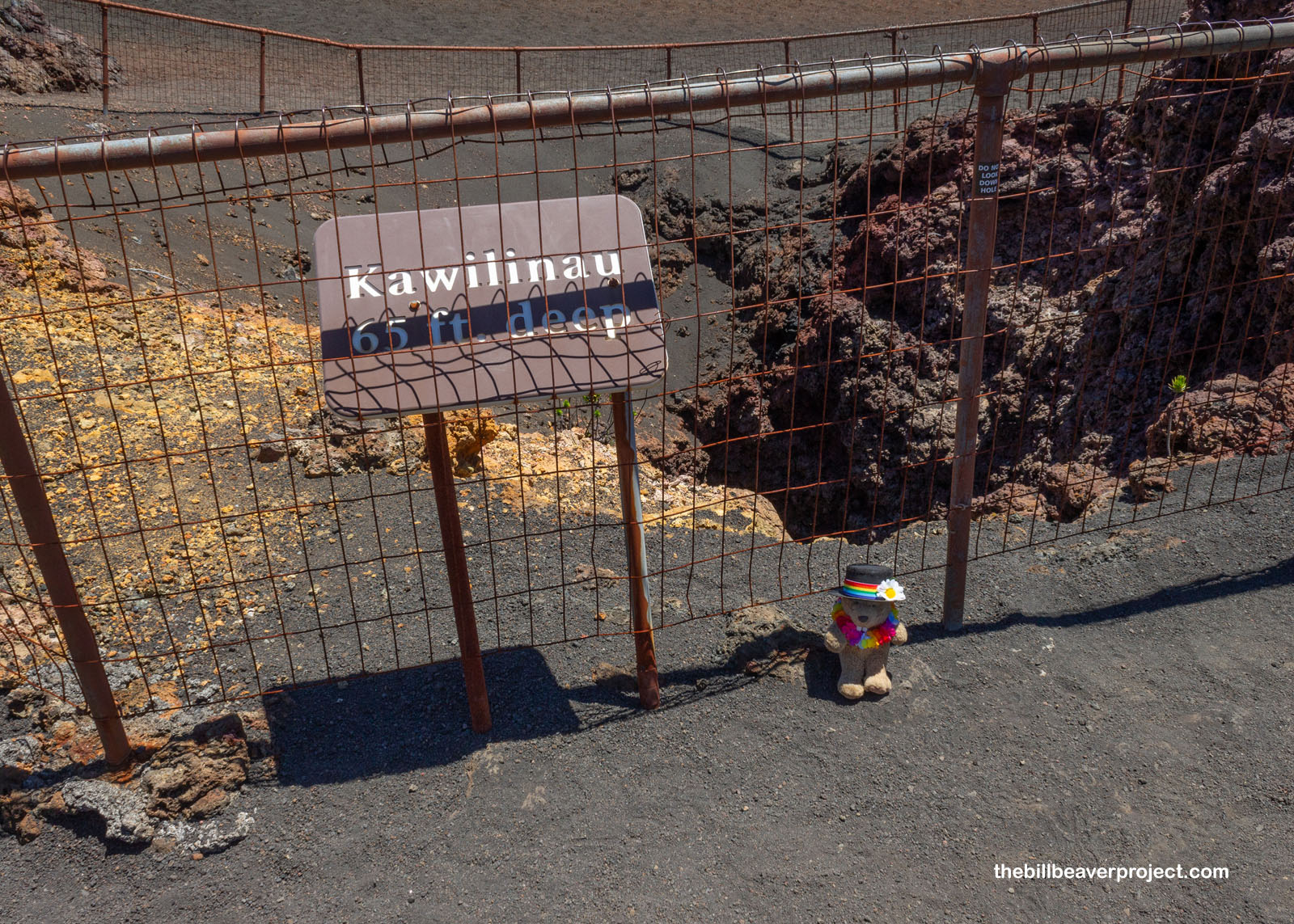 |
On the other side of Halāliʻi, I saw the other edge of the crater, layered in reds and greens, and while I wasn’t going to extend my journey all the way to the other side, it was a nice, colorful bookend to a long, colorful hike! By this point, the wind was really whipping, so I was ready to begin my long journey back.
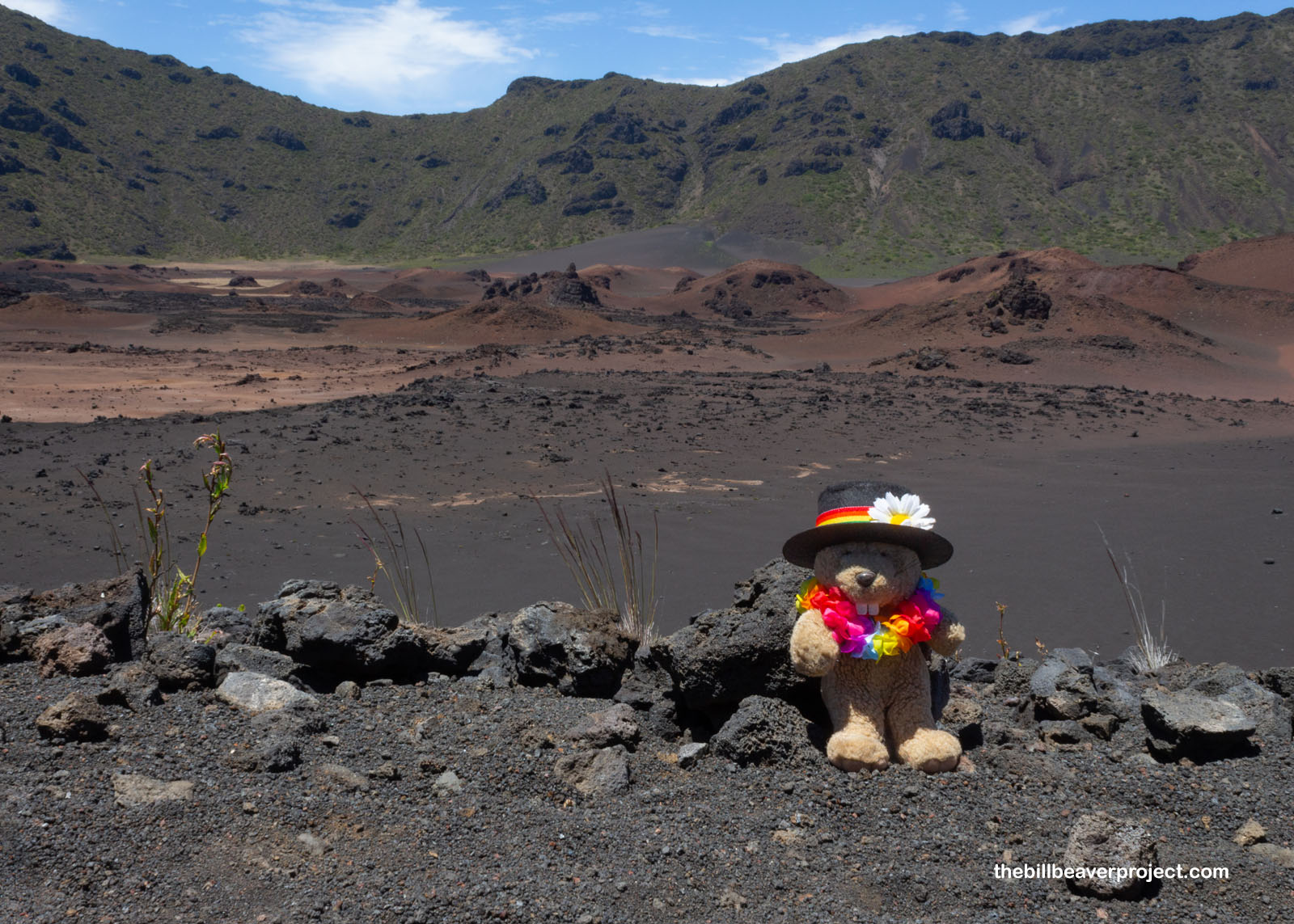 |
And oof, what a journey back! I’d been so caught up in the splendor of this enormous crater that I didn’t even realize how far I’d come: 6.1 miles! I gathered up my gumption and set off, setting aside my camera to focus on pacing, pausing twice: once for a breather at Hōlua Cabin and once to listen to an endangered nēnē honking from a hill just off the trail! Then I slogged up those switchbacks, now very much exposed to the afternoon sun. The clouds had cleared over the ocean, and I didn’t meet the rainbow lion again. Even without that extra encouragement, I still clocked my hike out of the crater at 2 hours and 9 minutes!
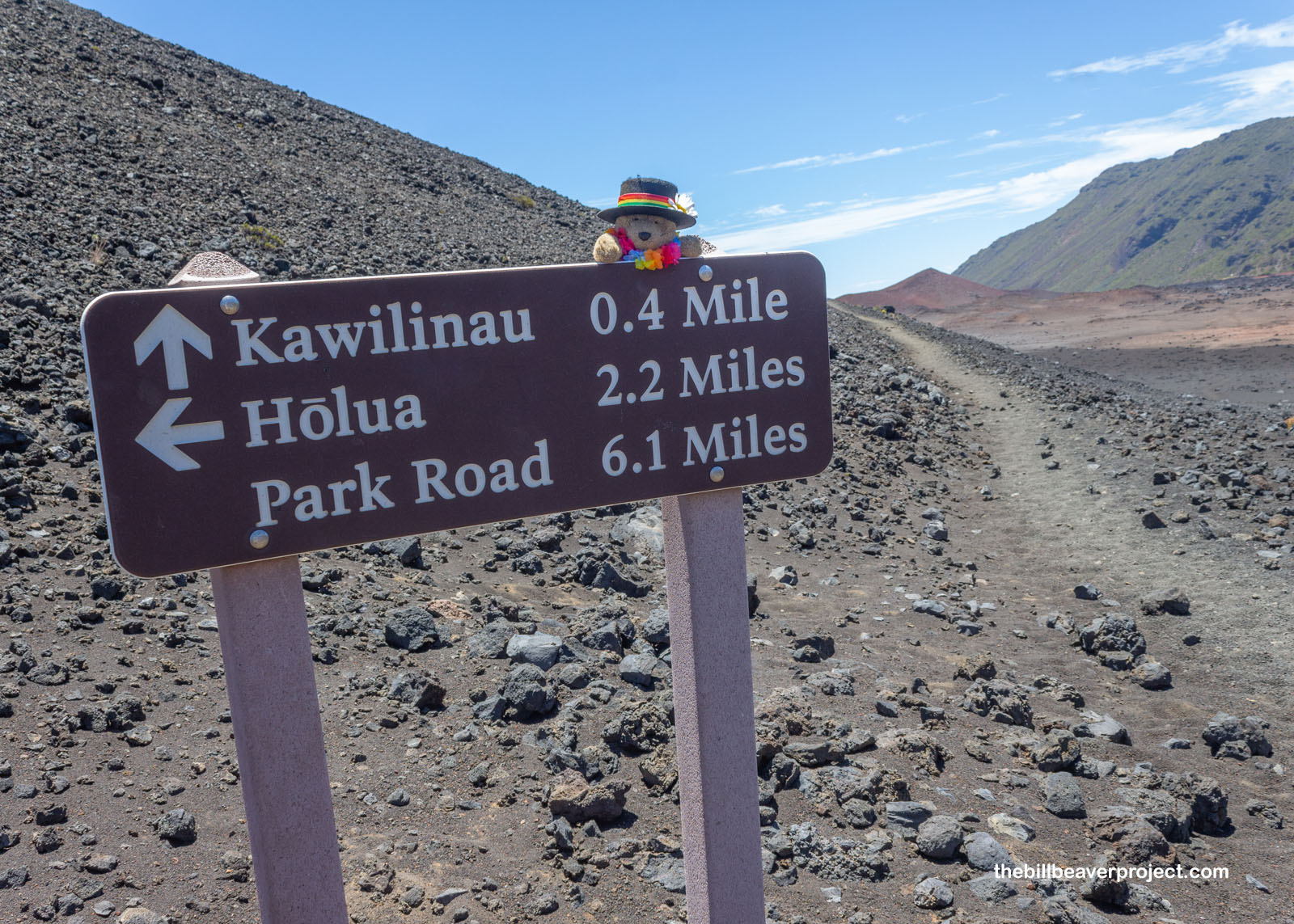 |
Now thoroughly bushed, I headed up to the visitor center to stamp my park passport then visited the lookout at the summit, where the wind was blasting even more ferociously than in the crater, and it was actually pretty cold! There were neat views in all directions, including a clear vista of Mauna Kea, about 70 miles away, plus an exhibit on the ʻuaʻu, the Hawaiian petrel, whose largest nesting colony is here on the slopes of Haleakalā!
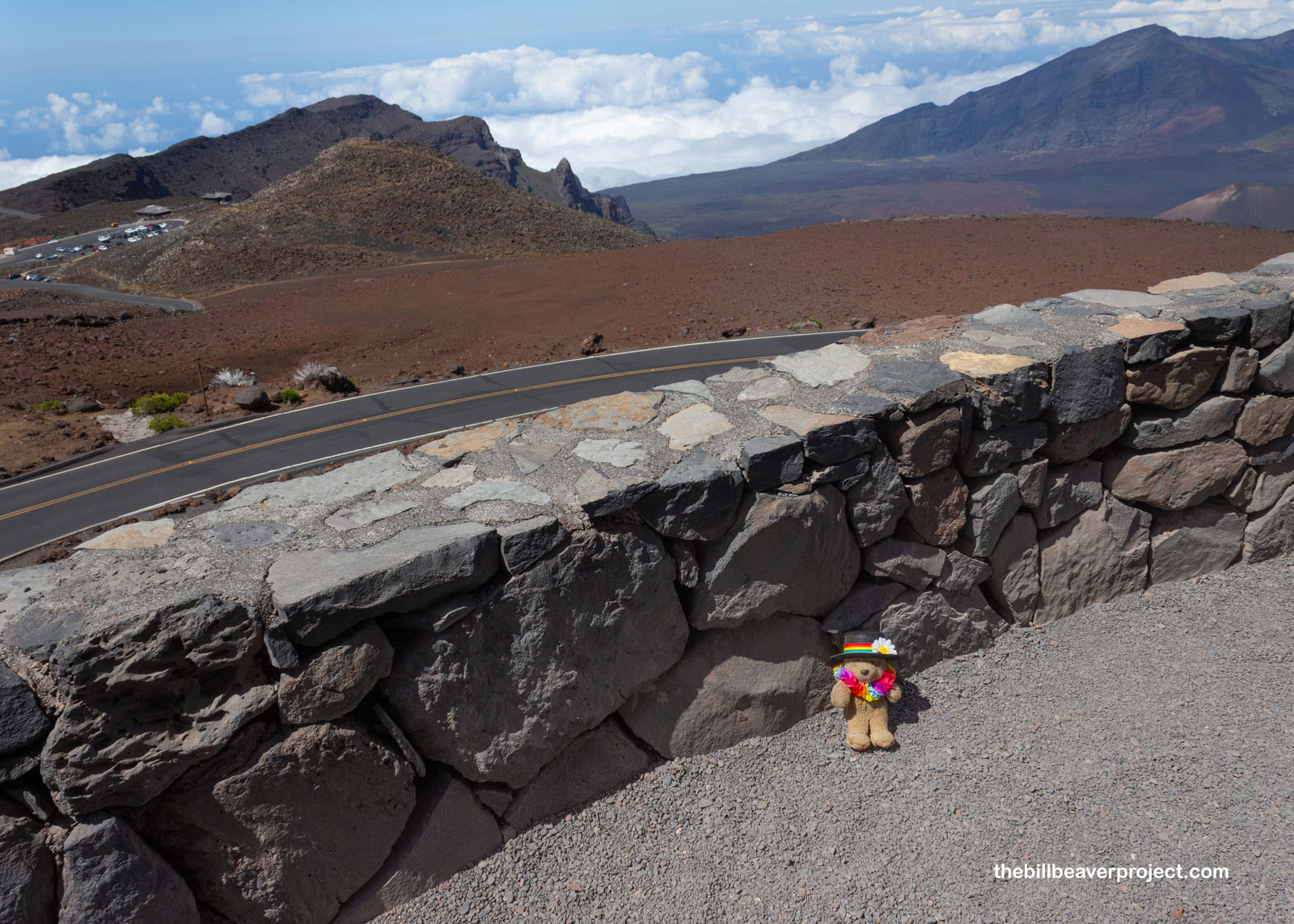 |
Just past the lookout was the Haleakalā Observatory, built in 1961 to view the skies with spectacular clarity. That’s because the summit of Haleakalā is above one third of the troposphere, the atmospheric layer with the most moisture and weather! From here, a complex of seven facilities observe (you guessed it) the sun, plus over 5,700 asteroids, comets, variable stars, and other celestial bodies!
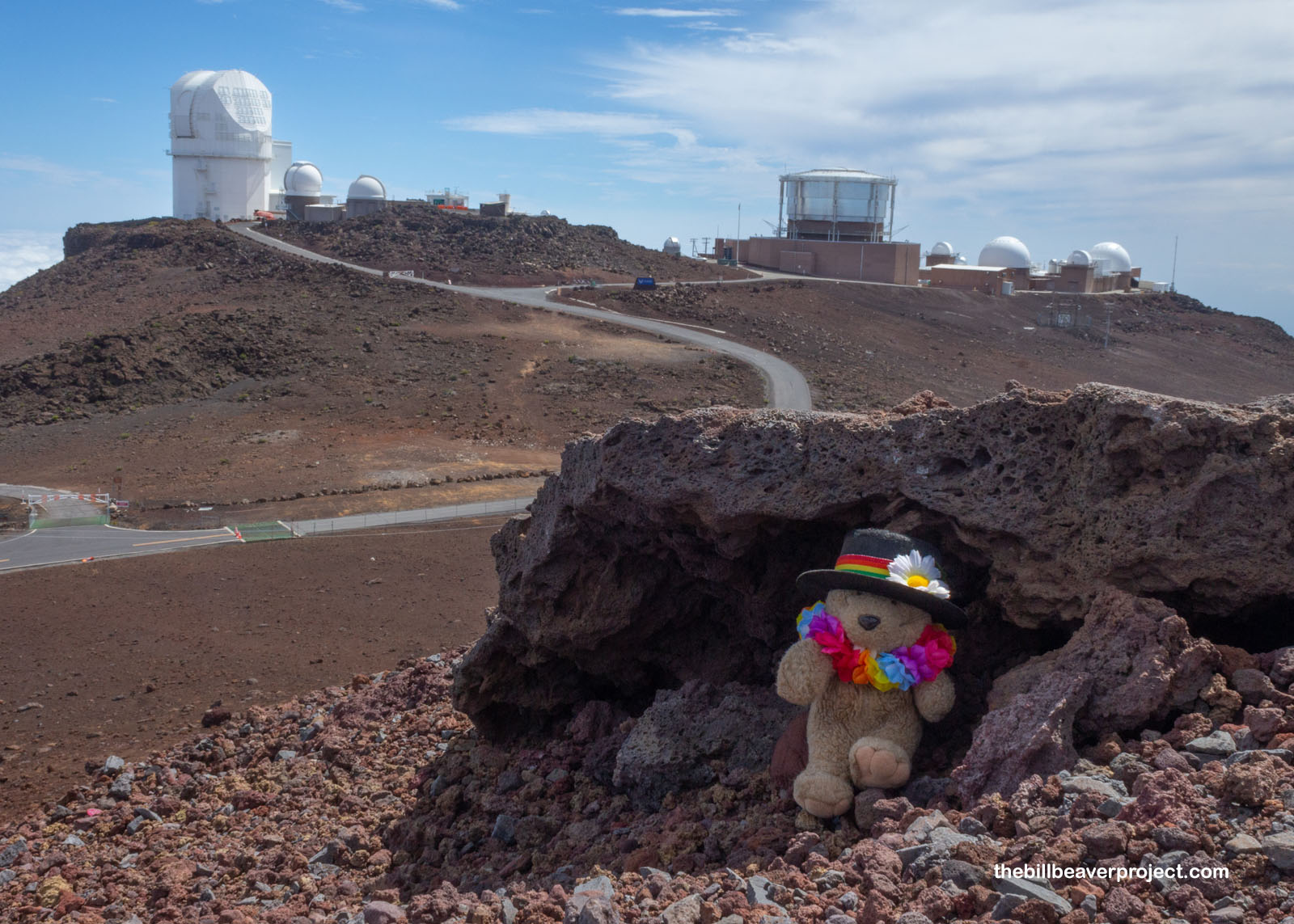 |
Having reached for the stars, and being super, duper tired, I wound my way back down Haleakalā and headed north to Lāhainā for some Fourth of July festivities! As you’ll remember from my visit to Kamakahonu yesterday, Kamehameha II moved Hawaiʻi’s royal center here from the Big Island in 1820. He set up his residence on an island within an island, called Mokuʻula, and this would be the center of the Kingdom of Hawaiʻi for the next 25 years!
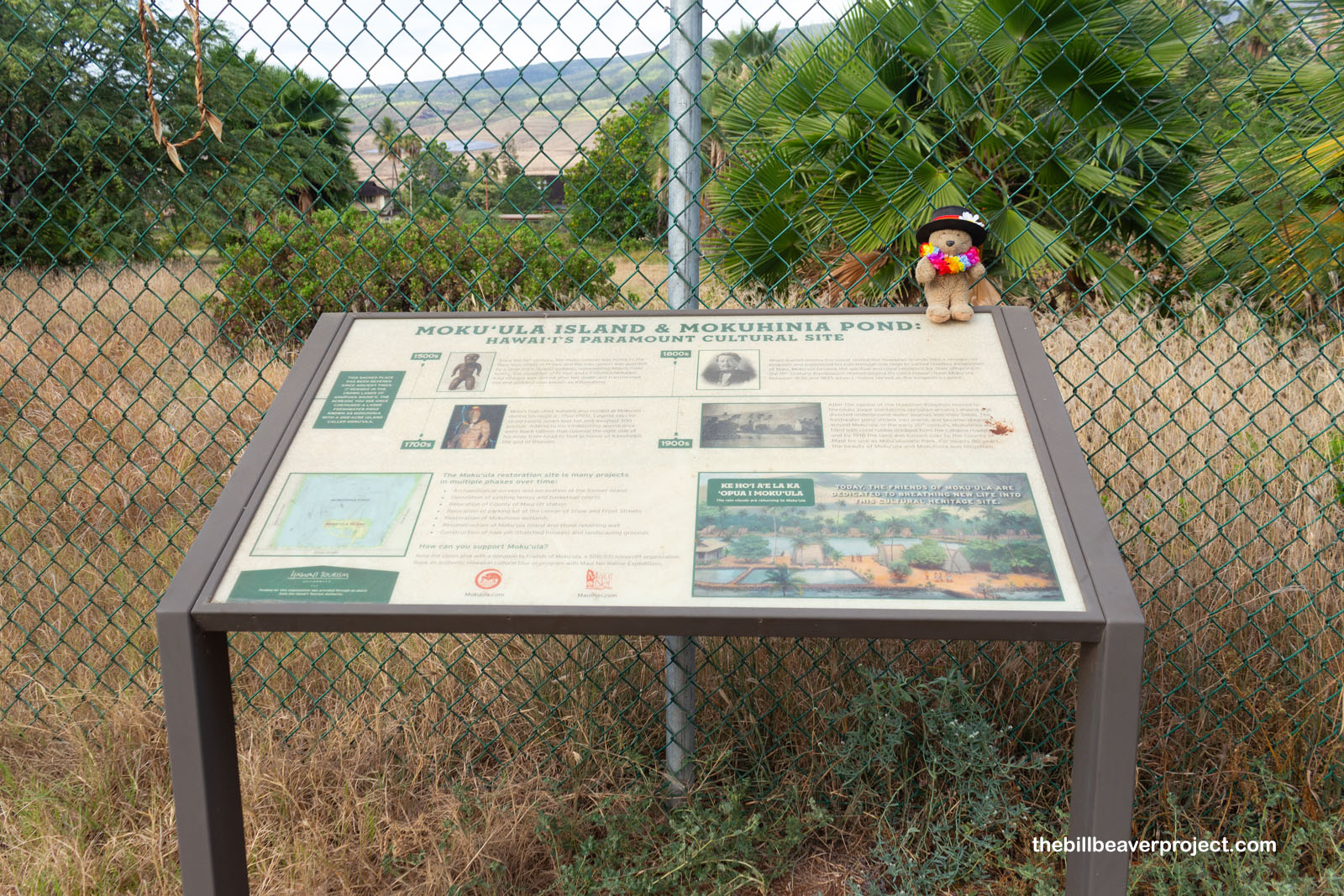 |
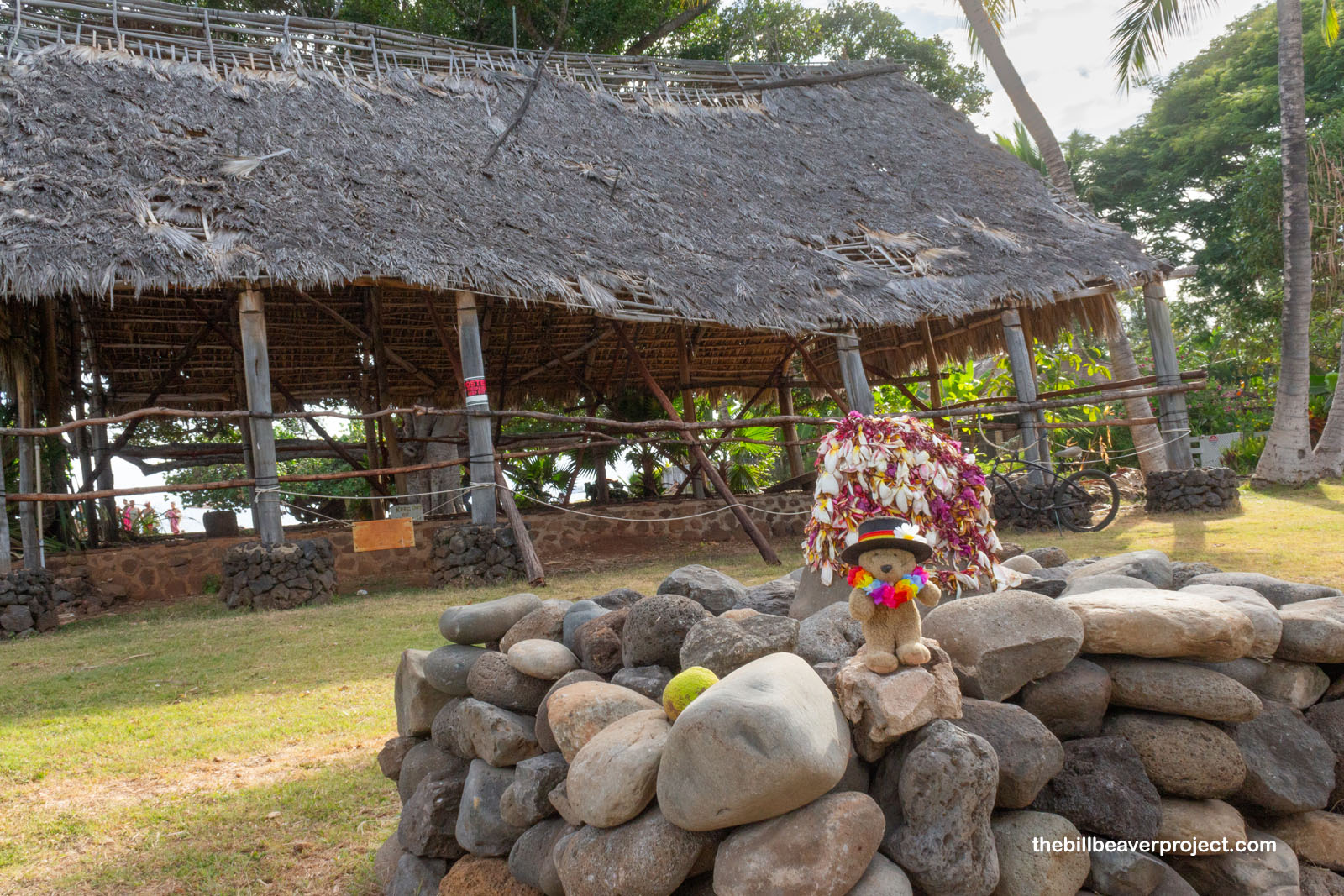 |
In the heart of town, buzzing with Fourth of July festivities, taro plants were still growing in the royal garden! When he was young, Kamehameha III worked these fields to build a sense of pride and dignity in agriculture! These tasty, purple tubers were an important staple for folks all across the Hawaiian Islands!
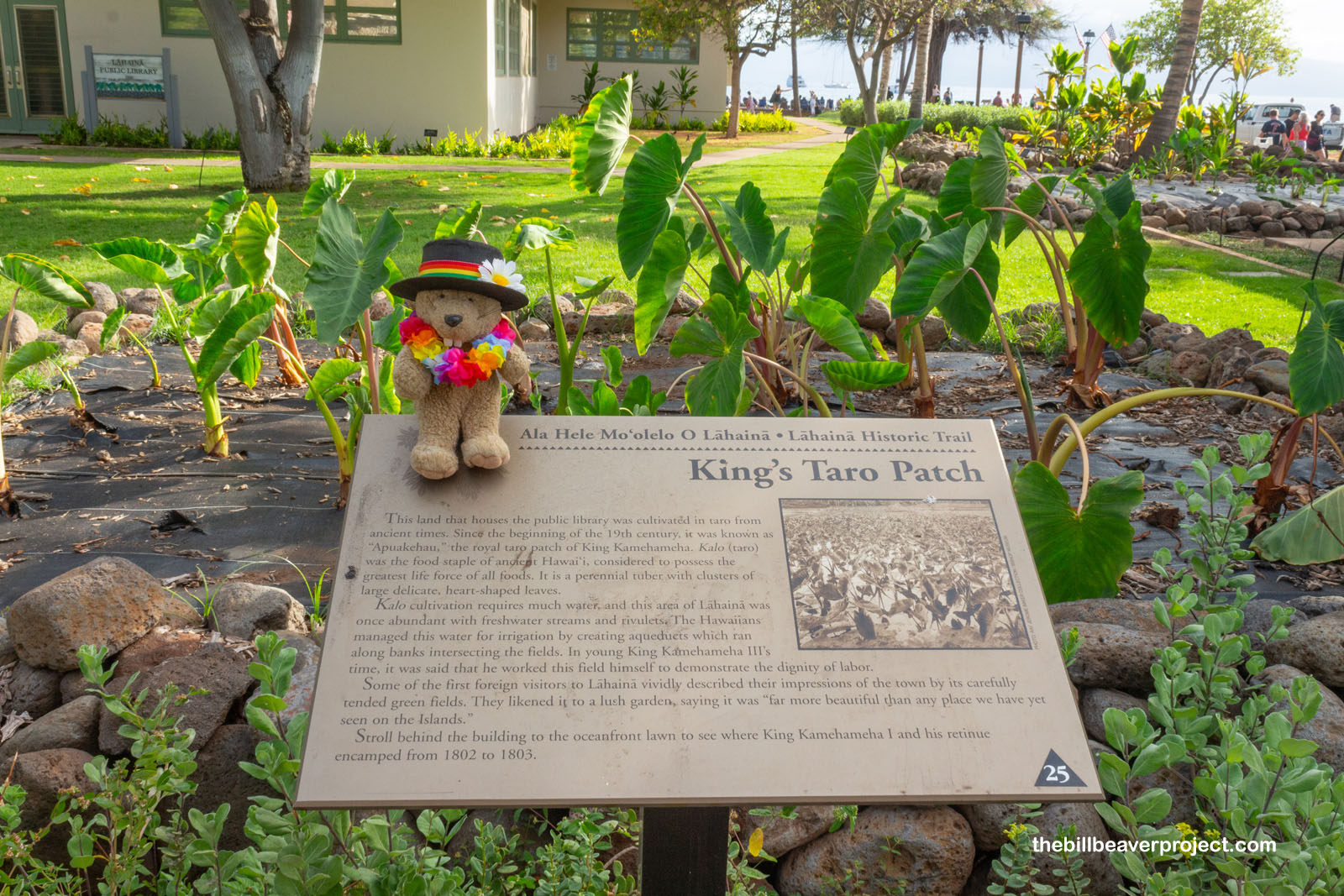 |
And just offshore was a super important rock called the Haoula Stone! Like its Big Island sibling, the Naha Stone, this huge rock was a birthing stone where chiefesses would come to have their babies! When not used for that purpose, folks would sit on the Haoula Stone to take advantage of the brackish water’s healing properties!
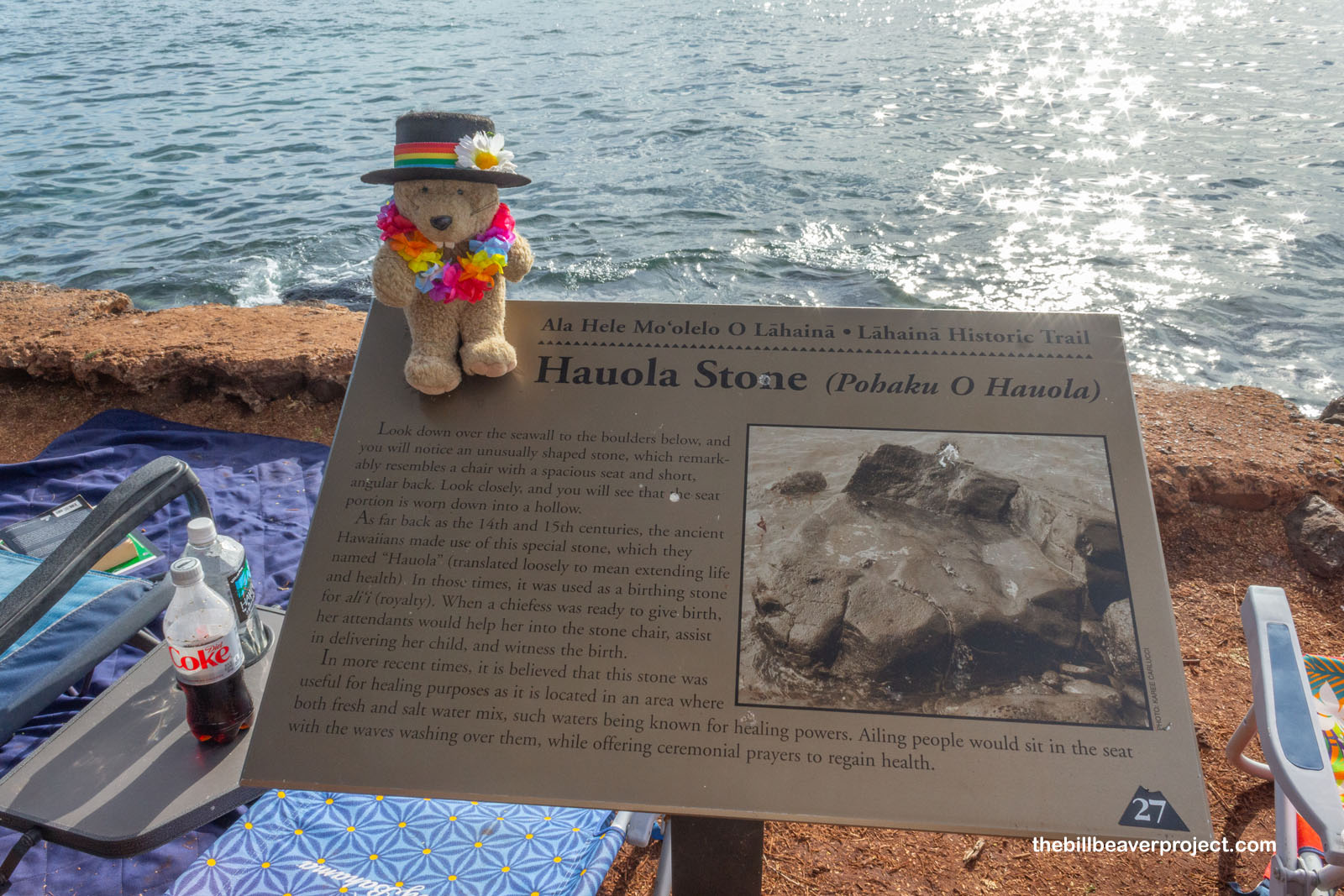 |
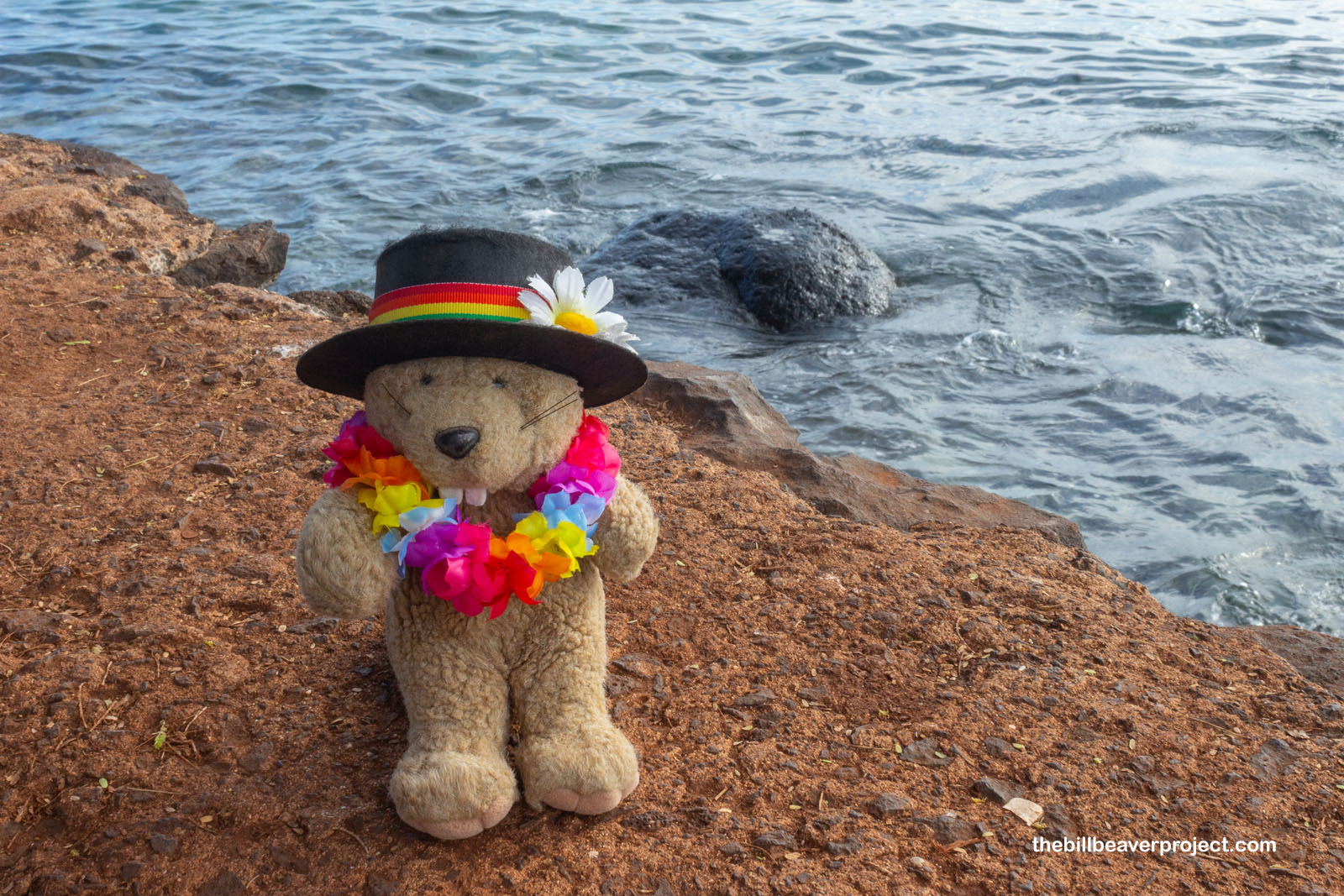 |
Kamehameha I camped here in 1802, during a campaign against Kauaʻi, in a brick palace built by two convicts who’d escaped from Australia! It was the first western style structure on the Hawaiian Islands, and he had it built for his wife, Kaʻahumanu, who had been born on Maui. Flattering though this was, she preferred to stay in a traditional grass hut instead!
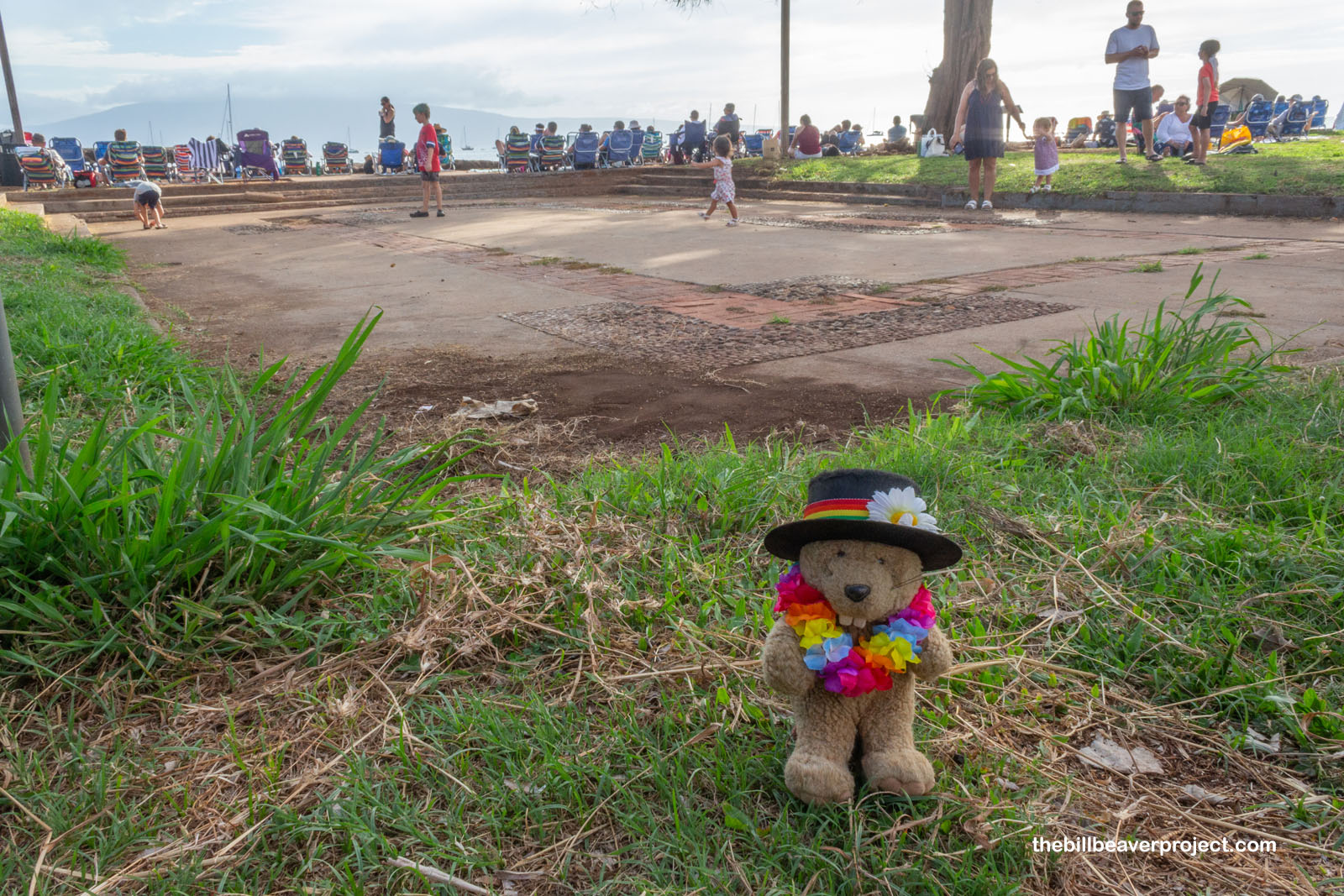 |
His son, Kamehameha III, would go on to install Hawaiʻi’s first lighted navigation tower here. Lit with whale oil on November 4, 1840, it was older than any lighthouse on the Pacific Coast! Rebuilt by the U.S. Lighthouse Board in 1906, the lighthouse of today is powered by the sun, bringing today’s journey full circle!
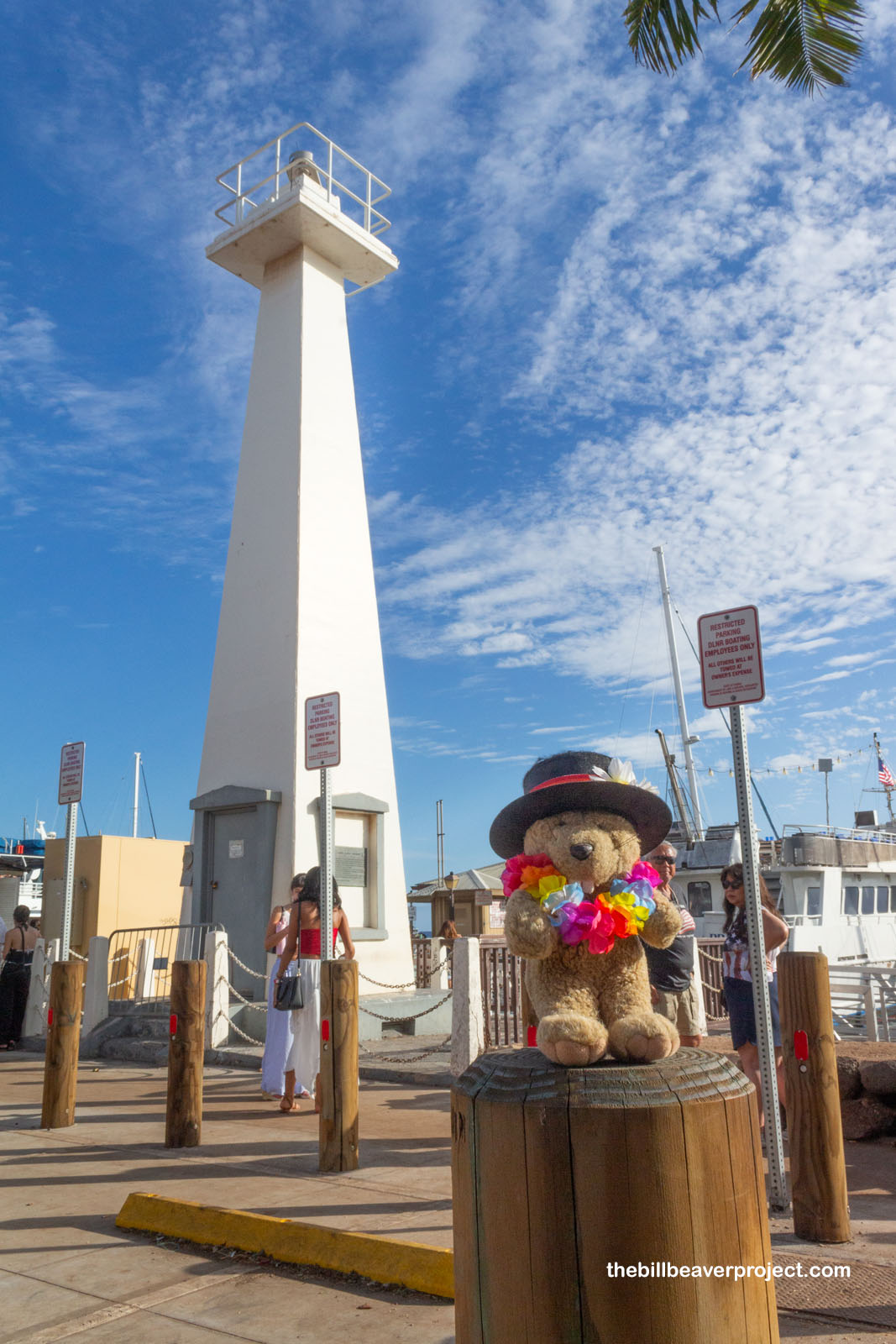 |
I finished my wanderings at the Lāhainā Banyan Court, home to the island’s most famous tree! Brought from India, this banyan tree was planted by Sheriff William Owen Smith on April 24, 1873, commemorating 50 years since the first Protestant missionaries arrived on Maui. Just a few months ago, this largest banyan tree in the whole United States celebrated its 150th birthday!
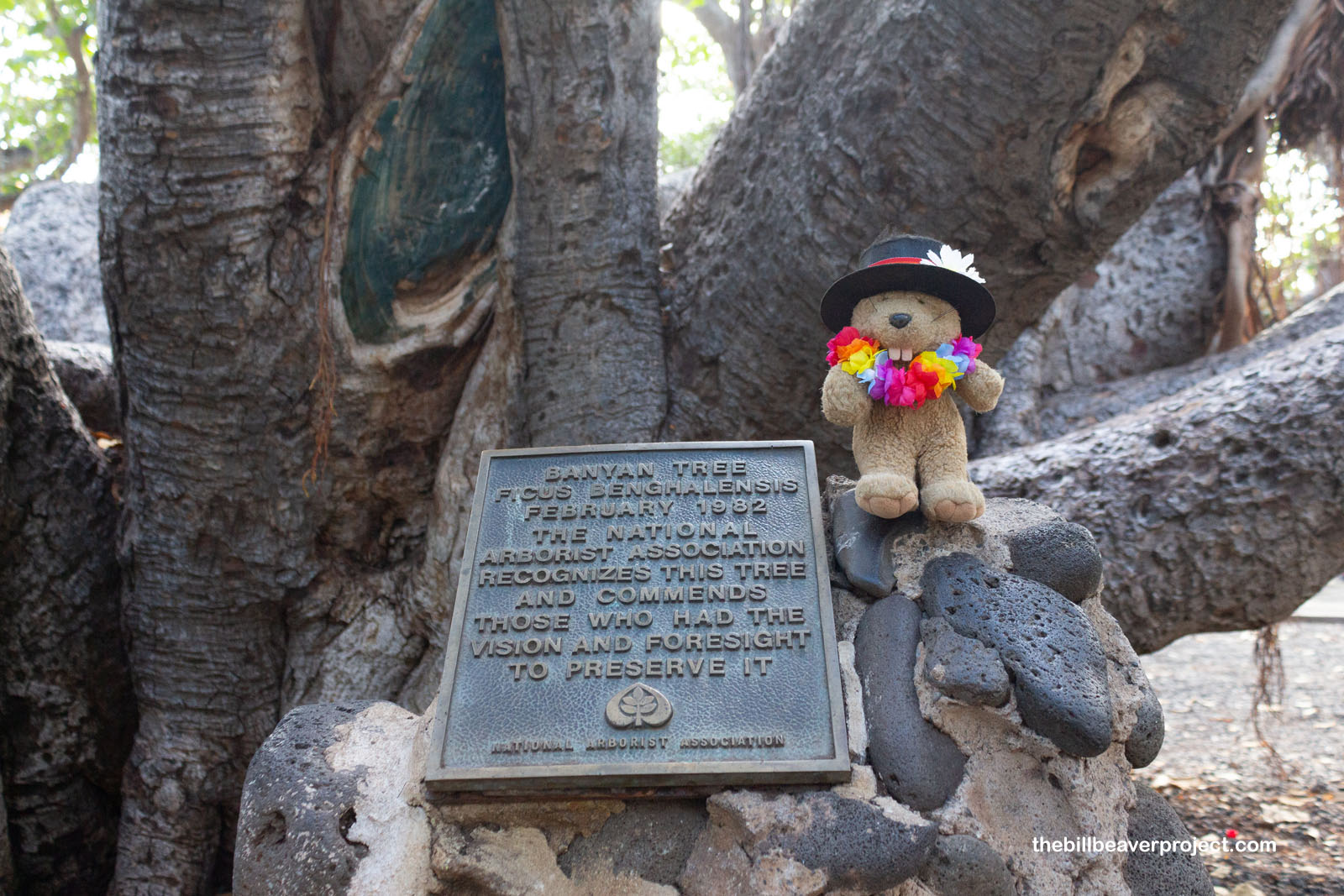 |
I waited for sunset under this magnificent banyan tree, which was super popular for photos. Some of its air roots have turned into new trunks, giving it a circumference of almost a quarter mile! It’s amazing how a tree of this size and shape could still be so magnificent after generations of crowds have set upon it!
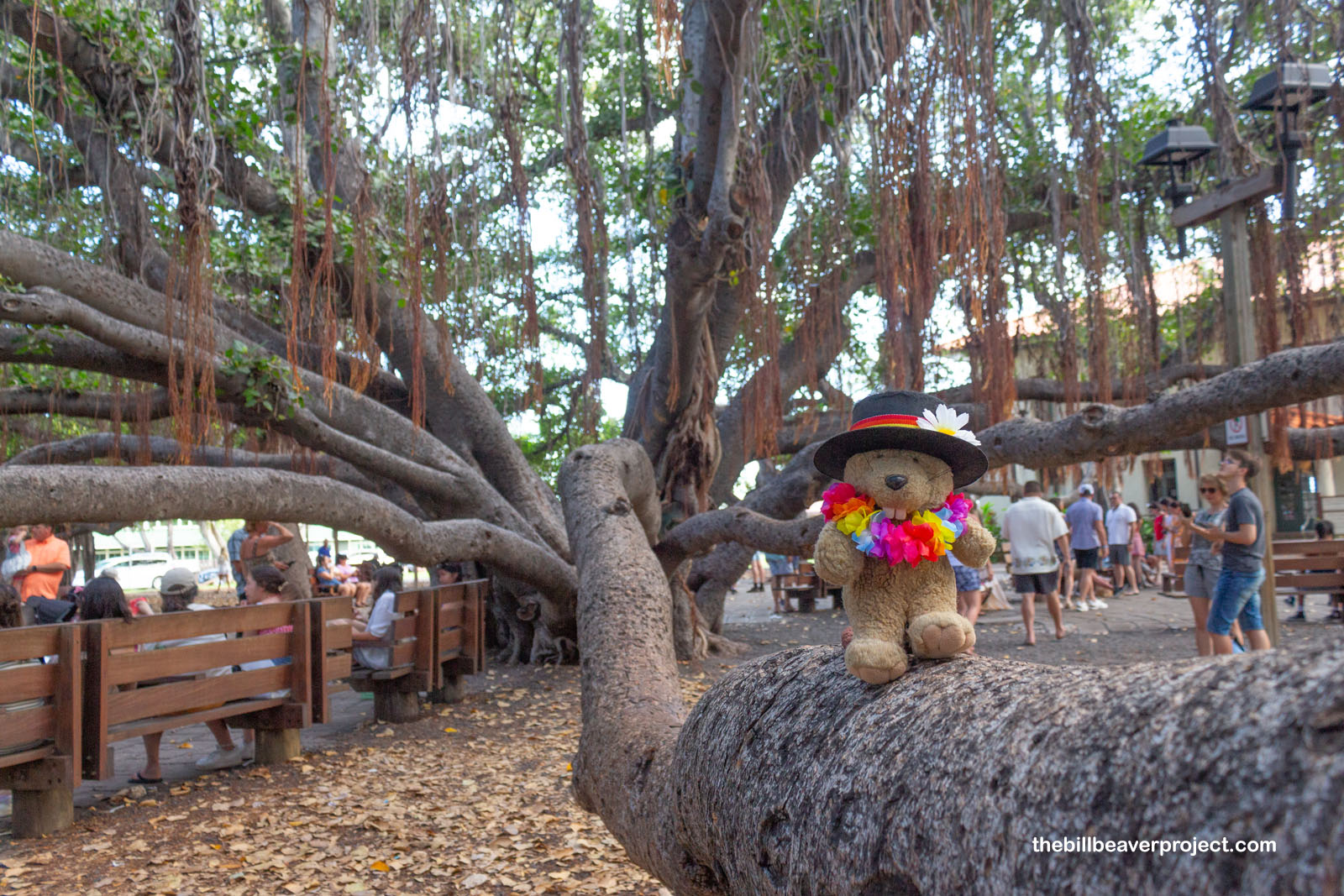 |
Between sunset and fireworks, I hunted, and hunted, and hunted for some dinner in this massively packed part of town before loading up on a huge slice of pizza from Prison Street Pizza! With my belly full, I turned my attention to the boats floating offshore as the fireworks kicked off at 8:00!
What a wild adventure this has been! It’s hard to believe that I’ll be heading home tomorrow after so much exploration on these magnificent islands. Before I go, I think I’ll stop by the ʻĪao Needle for one more peek at Maui’s natural beauty, and then it’ll be time to plan my next adventure!
Hauʻoli lā kūʻokoʻa!

 Previous Day |
Total Ground Covered: 490.4 mi (789.3 km) |
 |
